At Mercedes-Benz “Intelligent Drive” stands for the networking of systems, sensors and algorithms for enhanced comfort and safety. The drive system also benefits from the increasing level of intelligence on board vehicles. Following the Mercedes-Benz S-Class PLUG-IN HYBRID, the new Mercedes-Benz C 350 e provides a further example of dynamism and efficiency combined in impressive guise. The anticipatory operating strategy opens up a new dimension in driving. And the autonomously driving research car F 015 Luxury in Motion heralds a revolution in mobility, showing how “Intelligent Drive” might look like in the future.

Mercedes-Benz F 015 Luxury in Motion in San Francisco
Numerous new systems and sensors make Mercedes-Benz vehicles even more comfortable and even safer – and even more efficient and dynamic, too, as the intelligent operating strategy of the new Plug-In Hybrid controls the ideal interaction of combustion engine and electric motor in the background. The strategy not only adapts to the battery’s charge status, but also anticipates the course of the road or the traffic situation. The enhanced vehicle sensing technology featuring multi-stage radar sensors and enhanced cameras is employed for this purpose. Intelligent innovations such as the so-called haptic accelerator pedal additionally help the driver to save fuel in certain driving situations.
“Every Mercedes-Benz already incorporates a great deal of intelligence. This makes our cars among the safest in the world. And the drive system also benefits from the intelligent sensor technology on board. The anticipatory operating strategy spawns noticeable improvements in the efficiency of plug-in hybrids, for example,” says Prof. Dr Herbert Kohler, Head of Group Research & Sustainability at Daimler AG.

Mercedes-Benz F 015 Luxury in Motion Interior
Mercedes-Benz will be launching ten new Plug-In Hybrid models until 2017 – on average one new model with this high-tech hybrid drive every four months. After the successful launch of the S 500 PLUG-IN HYBRID, this month will see the C 350 e, the second model to feature the progressive drive concept, find its way to dealerships. And what might happen next with the strategic hybrid initiative has just been demonstrated by the Concept V-ision e study at the Geneva Motor Show.
The Plug-In Hybrid system is based on the company’s modular parallel hybrid system. The common system-specific feature is the additional clutch integrated between the combustion engine and the electric motor. On the one hand this decouples the combustion engine during purely electric operation, while on the other it allows the vehicle to use the combustion engine to move off, drawing on the performance of a wet start-up clutch.

Mercedes-Benz F 015 Luxury in Motion in San Francisco
“Intelligent Drive” today and tomorrow
Thanks to “Intelligent Drive”, vehicles from Mercedes-Benz are already able to detect many hazardous situations in road traffic and react as the situation demands. COLLISION PREVENTION ASSIST is on board as standard from the A to the S-Class, for example. This radar-based assistance system warns the driver when a risk of collision arises. And the more advanced COLLISION PREVENTION ASSIST PLUS system, becoming available over all models from Mercedes-Benz, is even able to carry out autonomous braking: if the driver fails to act when a risk of collision is detected, despite the warning lamp in the instrument cluster and the intermittent acoustic alert, the system will automatically trigger braking.
Beyond this, from the C-Class through to the S-Class there are already Mercedes-Benz models driving semi-autonomously on public roads today, equipped with features such as DISTRONIC PLUS with Steering Assist and the Stop&Go Pilot for semi-autonomous traffic jam following. Active Parking Assist with PARKTRONIC allows automated parking with active steering and brake control in both parallel and end-on spaces.
With its autonomously driving research vehicle F 015 Luxury in Motion, Mercedes-Benz provides an idea of what form “Intelligent Drive” might take in the future. The car’s role is evolving from merely a means of transport towards that of a comfortable retreat, too. Drivers can choose at any time whether they wish to drive themselves, with support of intelligent systems or whether the car is to take them to their destination in autonomous mode.
Time spent in the car thus acquires a totally new quality – as a result of the freedom to concern oneself with matters other than steering, accelerating and braking.
Six high-resolution displays are installed along the interior, in the dashboard, the back and sides of the car. The passengers are able to interact with the F 015 by eye-tracking, gesture control or touching the screens. They get information about the environment, use the entertainment system, make video calls or bring virtual worlds into the car. The primary feature of the innovative interior concept is the variable seating system, with four rotating lounge chairs. Through the face-to-face configuration all passengers are able to communicate with each other and enjoy the mobile living space while being driven.

Mercedes-Benz F 015 Luxury in Motion Interior
The F 015 also incorporates high-resolution sensor technology which continuously scans the vehicle’s surroundings, ensuring effective communication and interaction between the vehicle, the passengers and the world outside. This ‘extended sense’ enables the vehicle to keep tabs on its surroundings at all times.
The interactive LED fields at the front and rear and the high-precision laser system informs the driver of specific traffic conditions at an early stage. For instance, the F 015 is able to project a virtual crosswalk onto the road surface which lets the pedestrian know the road is clear. The F 015 becomes a reliable and intelligent partner in road traffic.

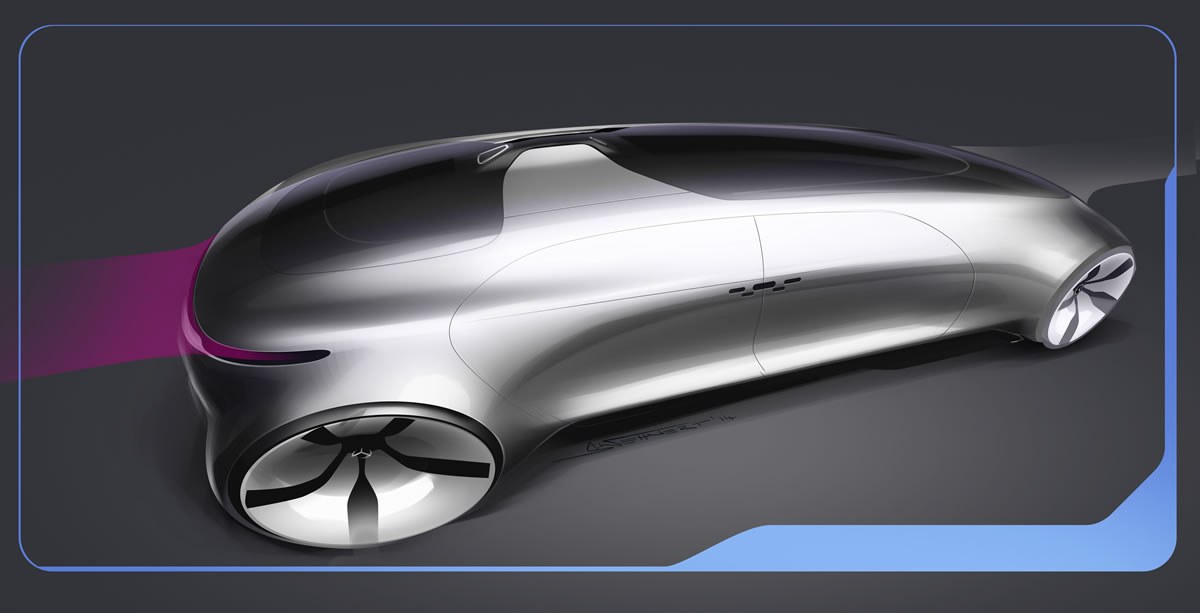

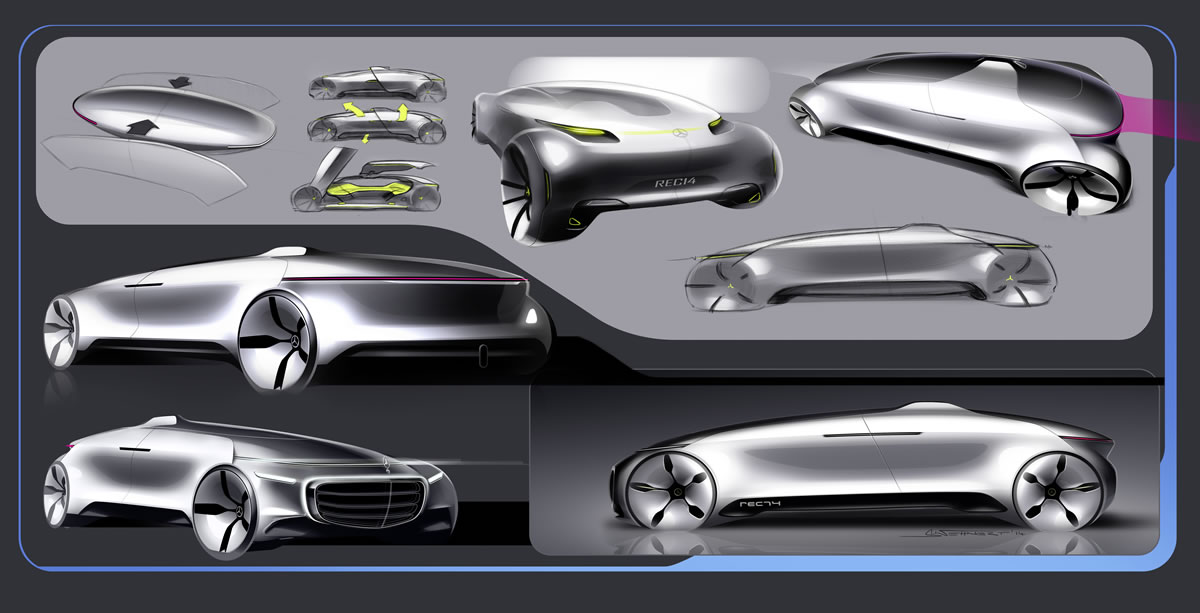
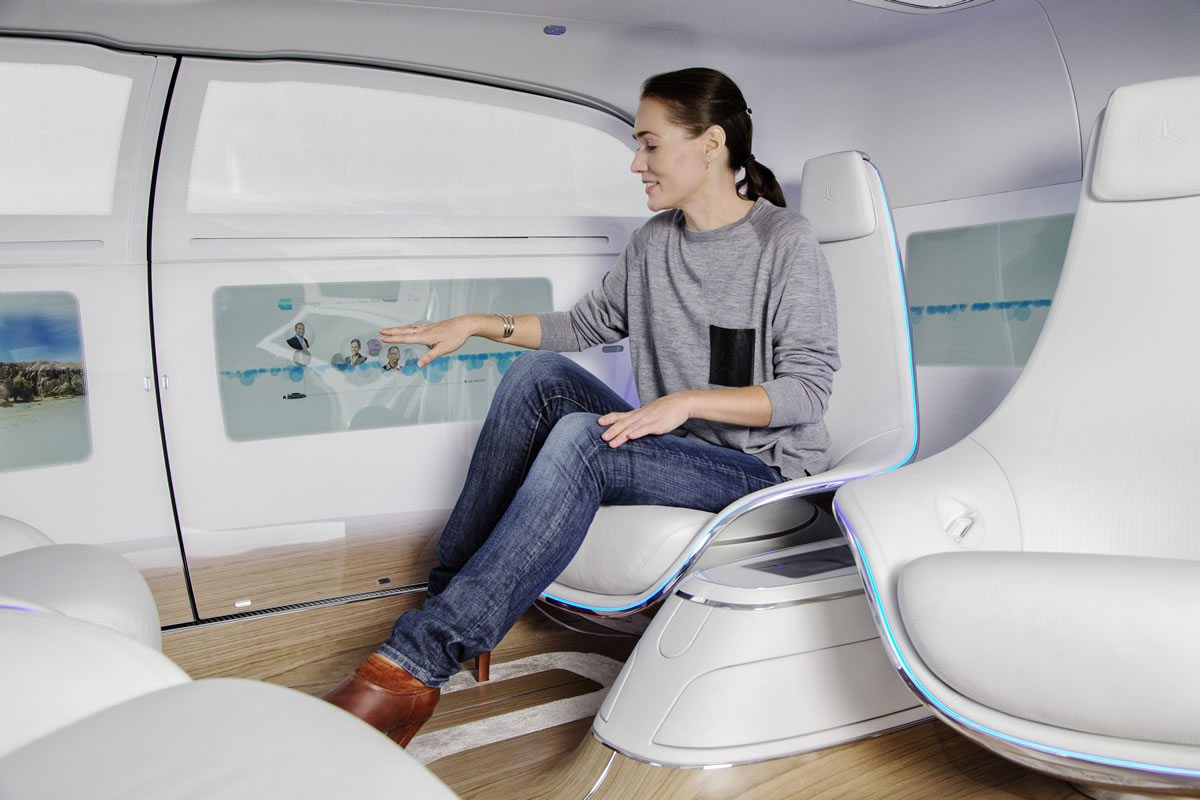
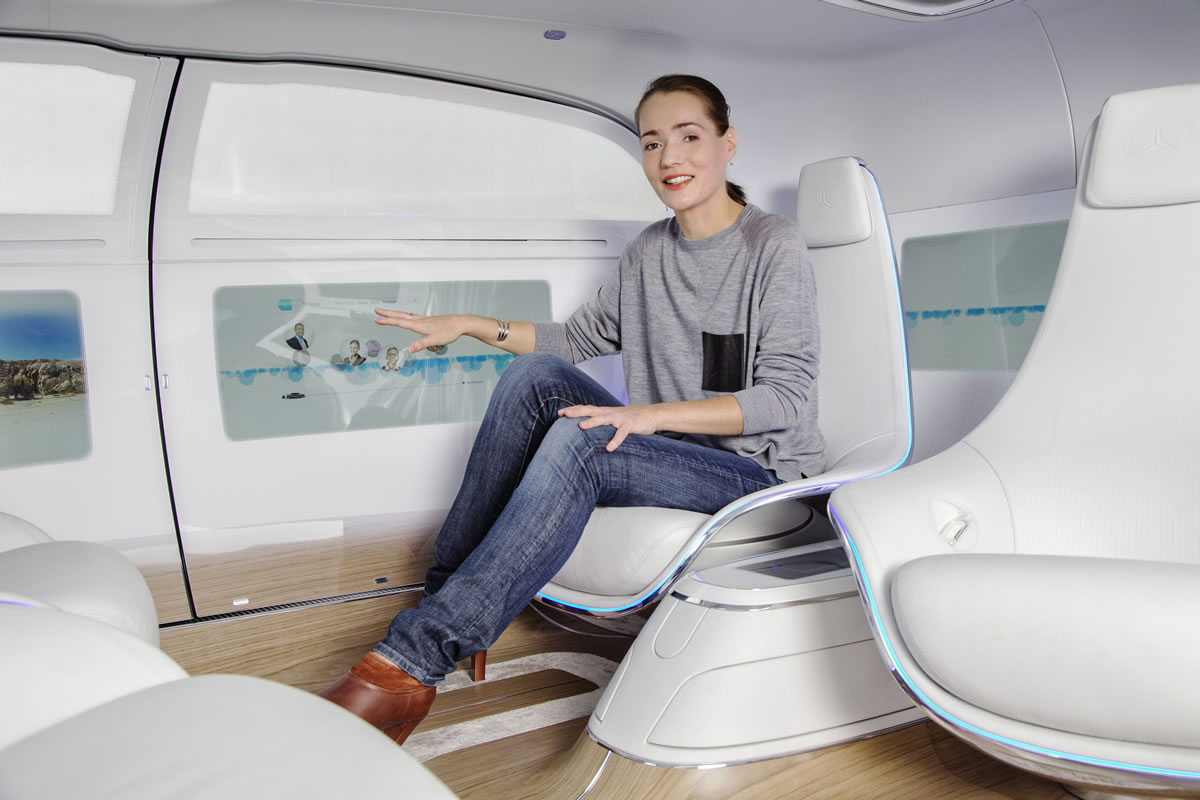
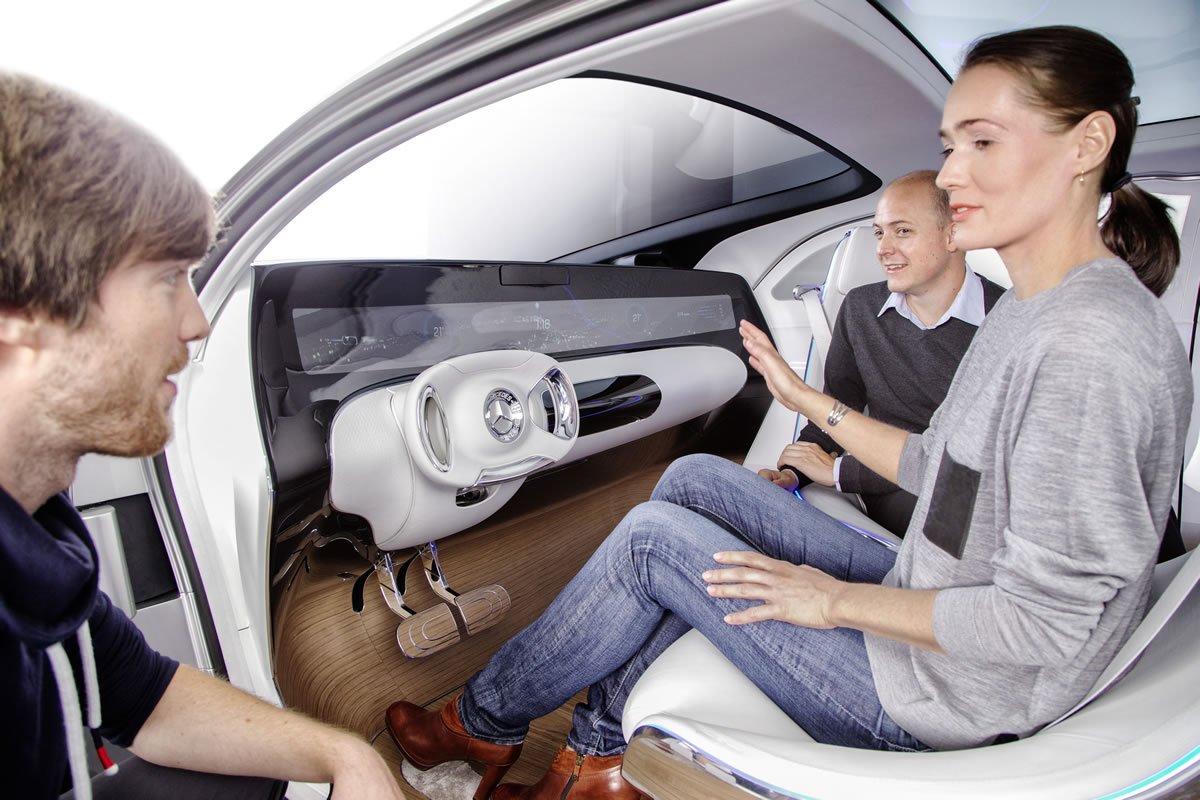

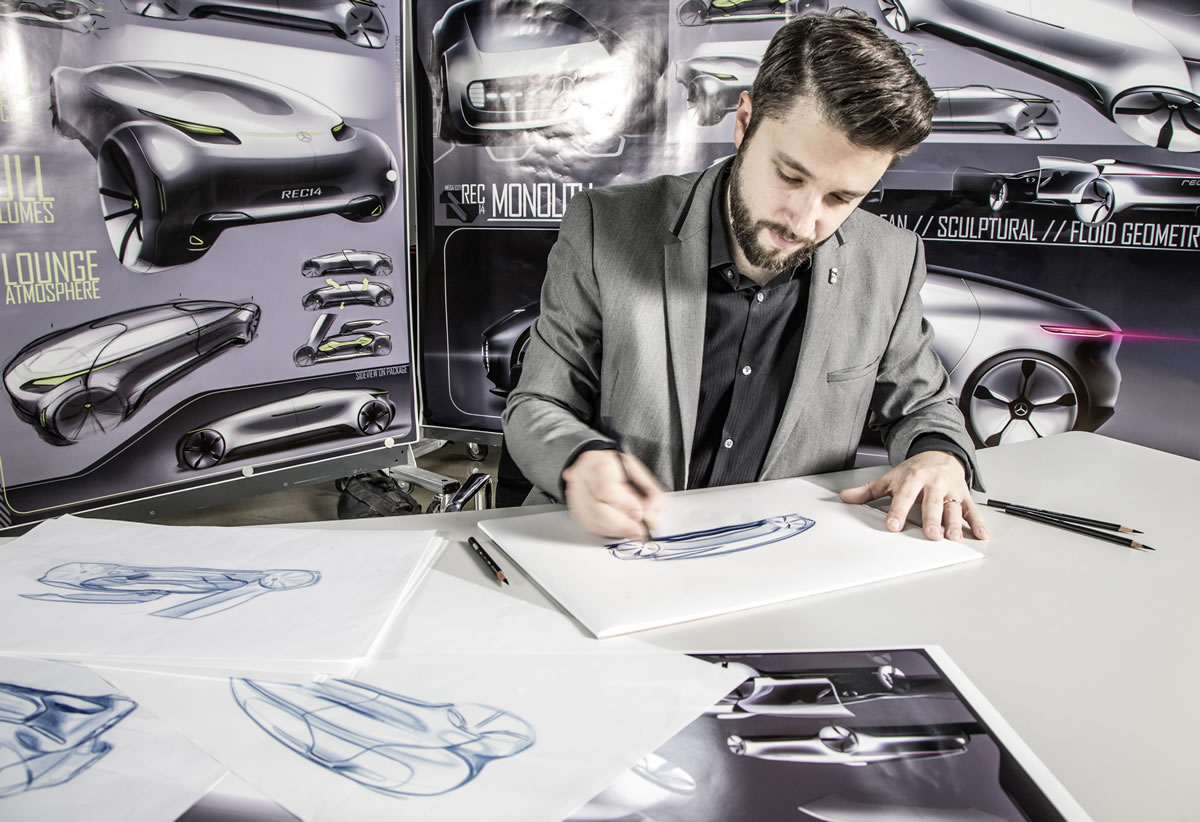
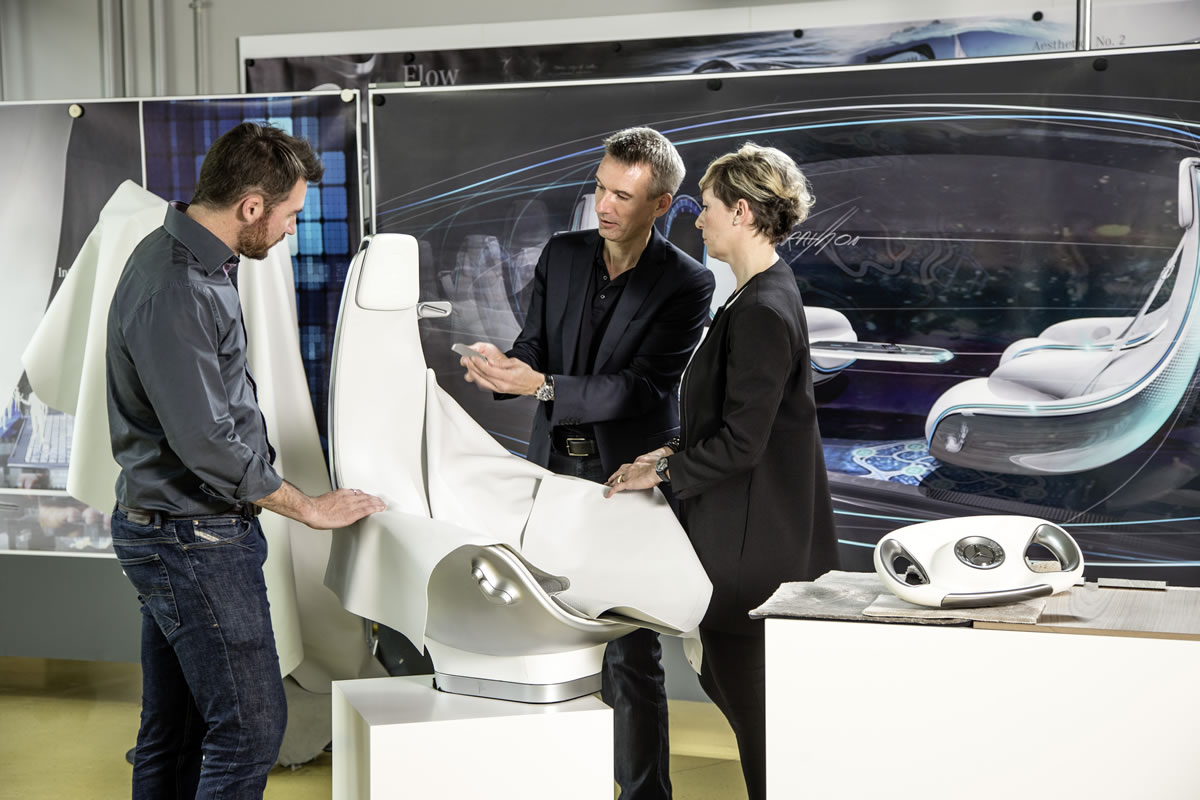

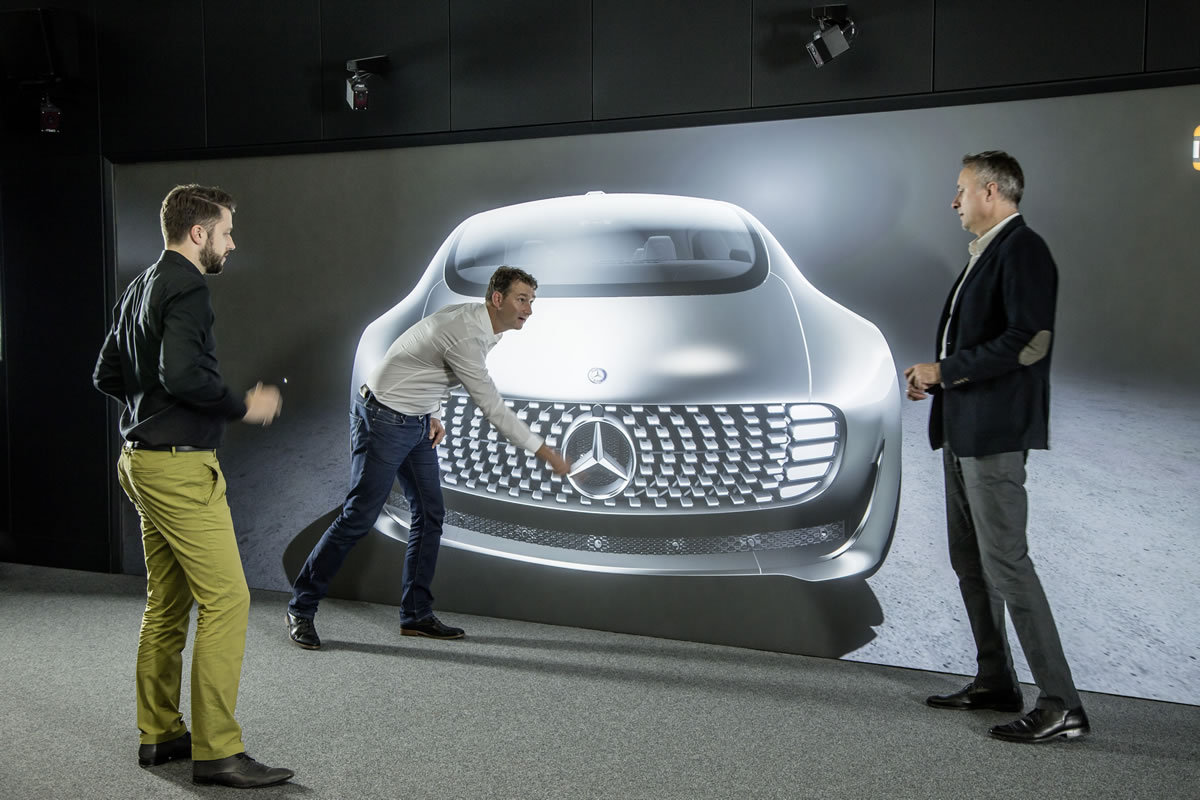
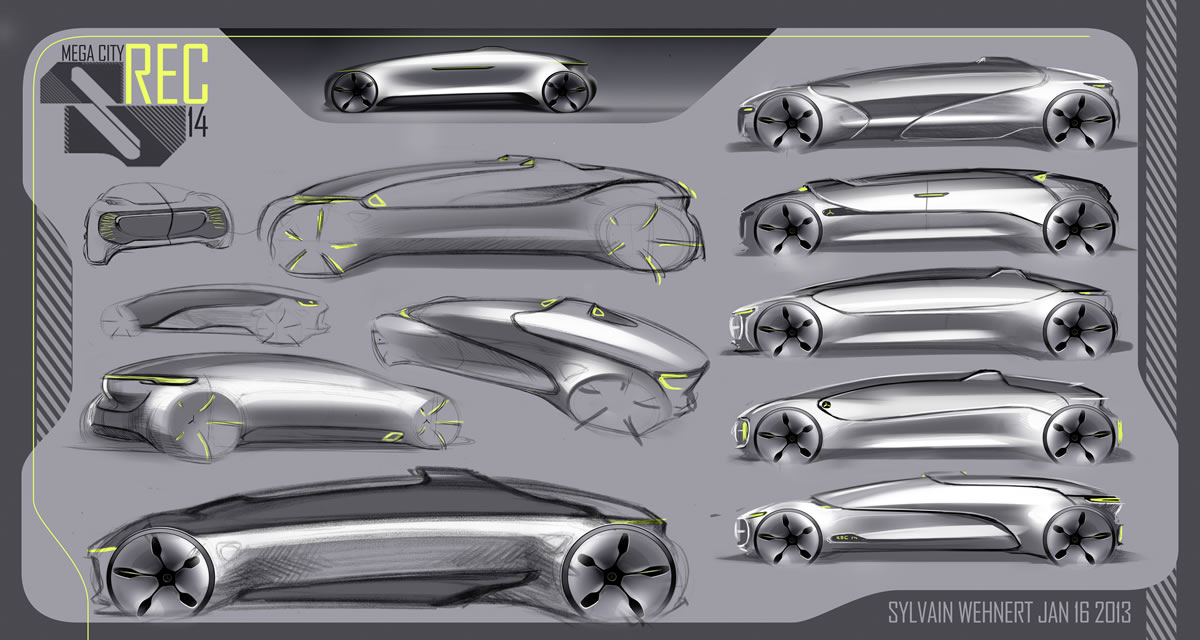
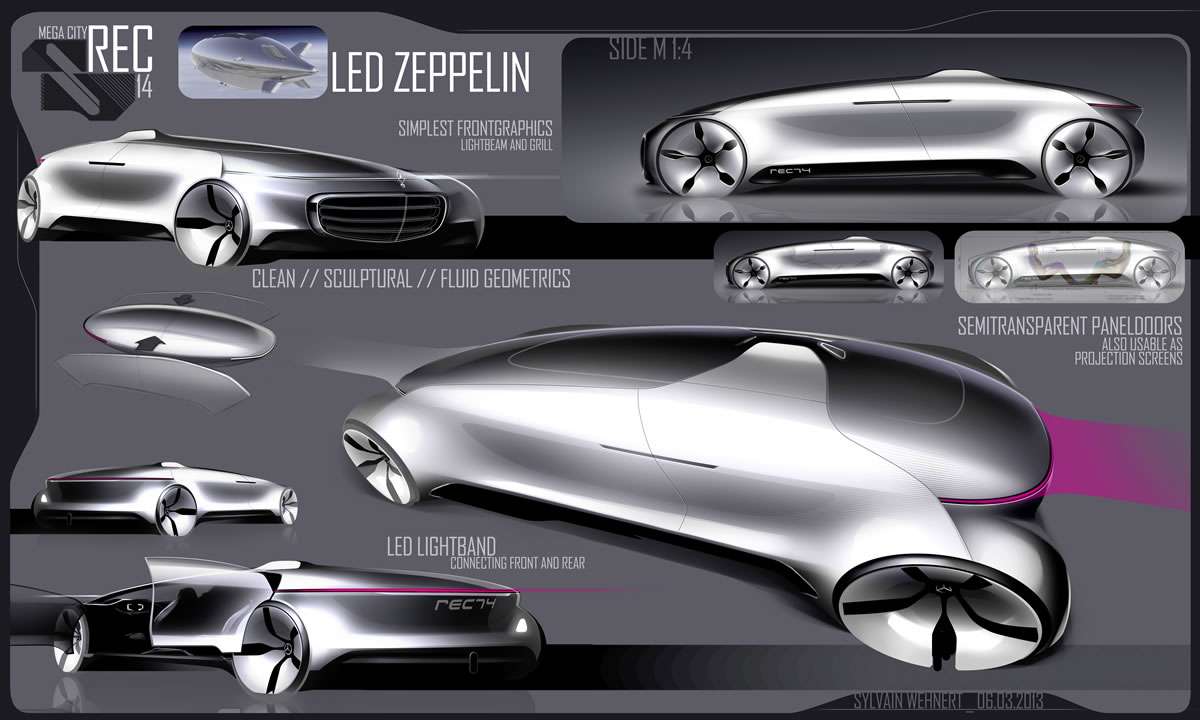
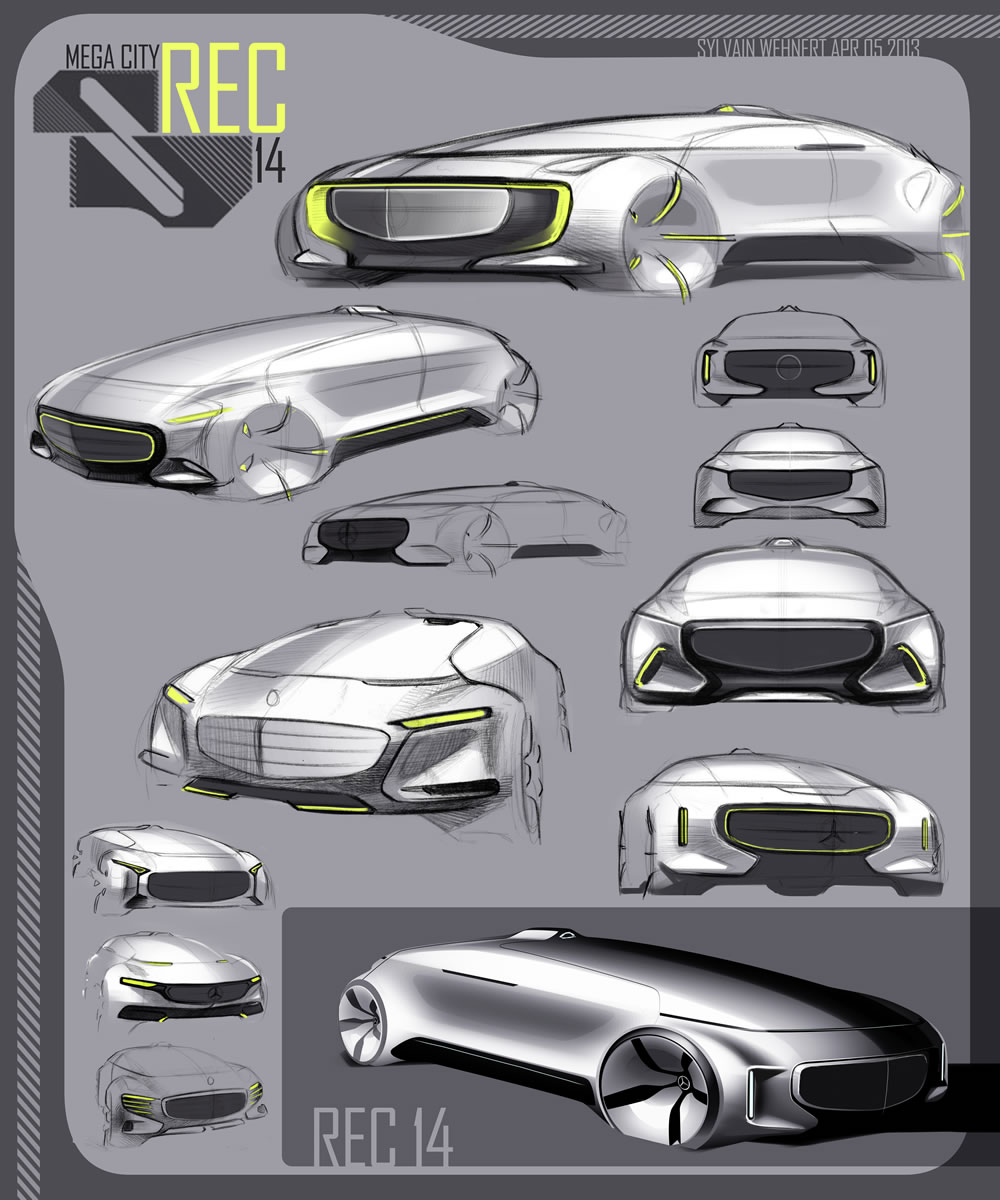
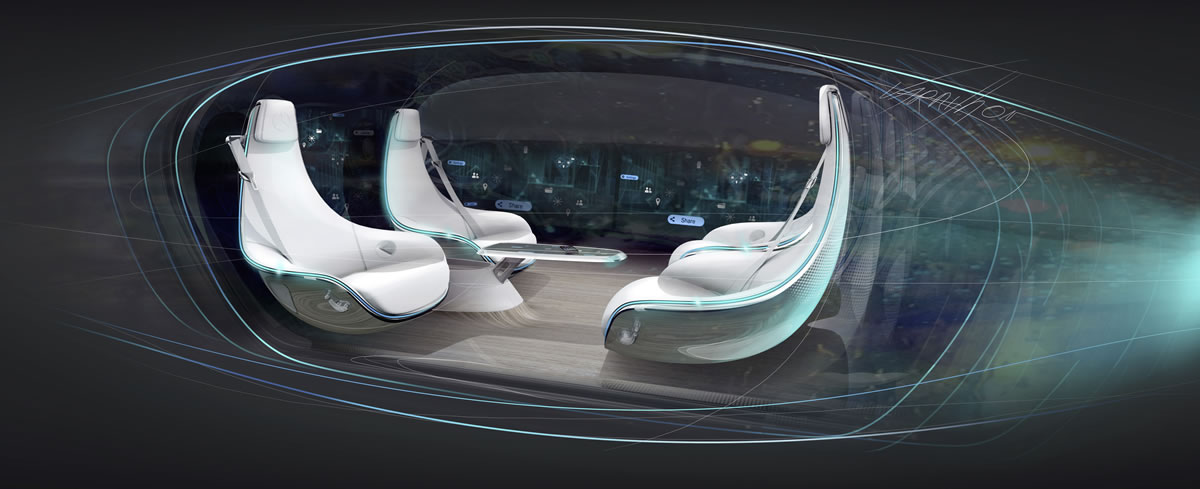

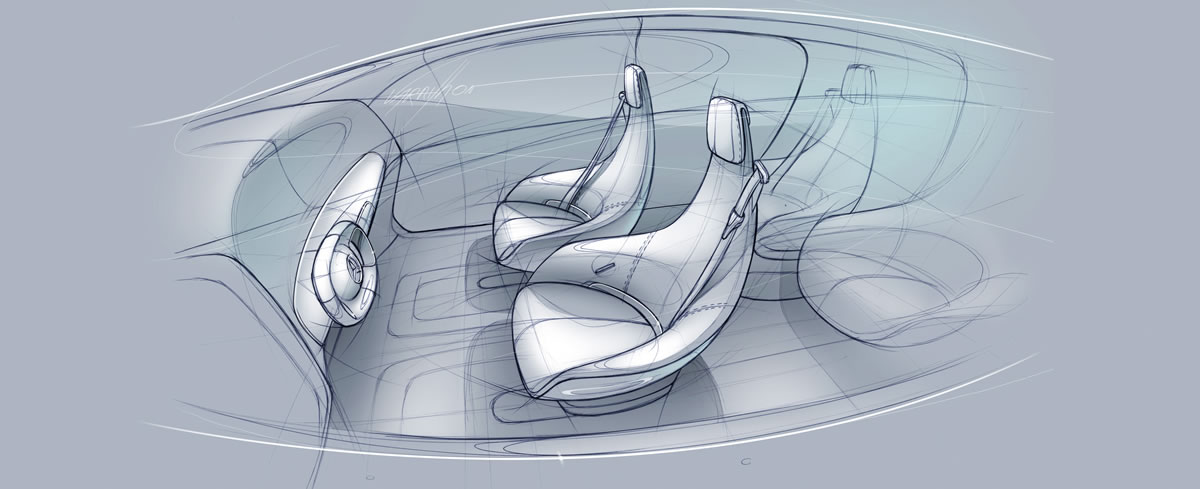
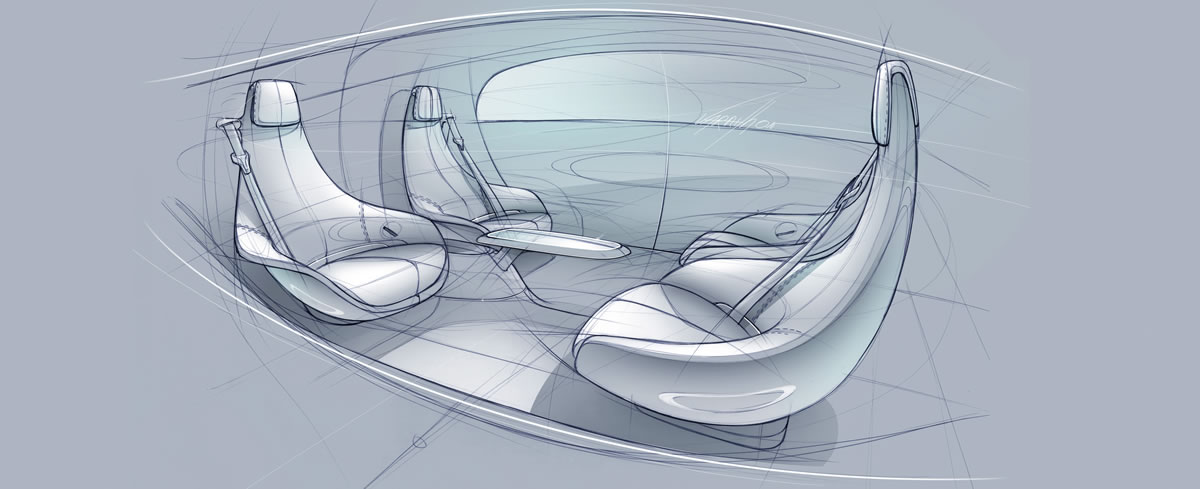
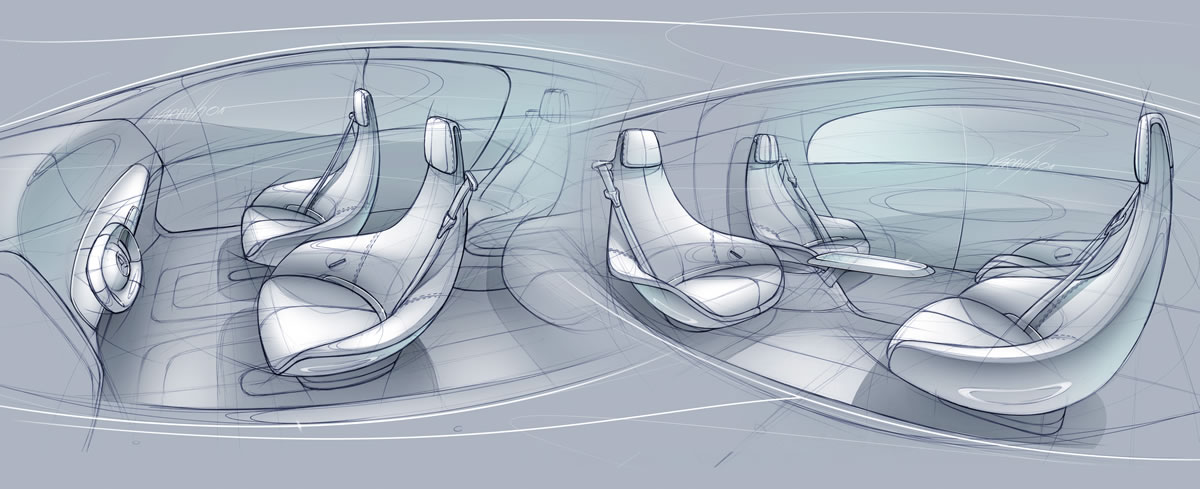
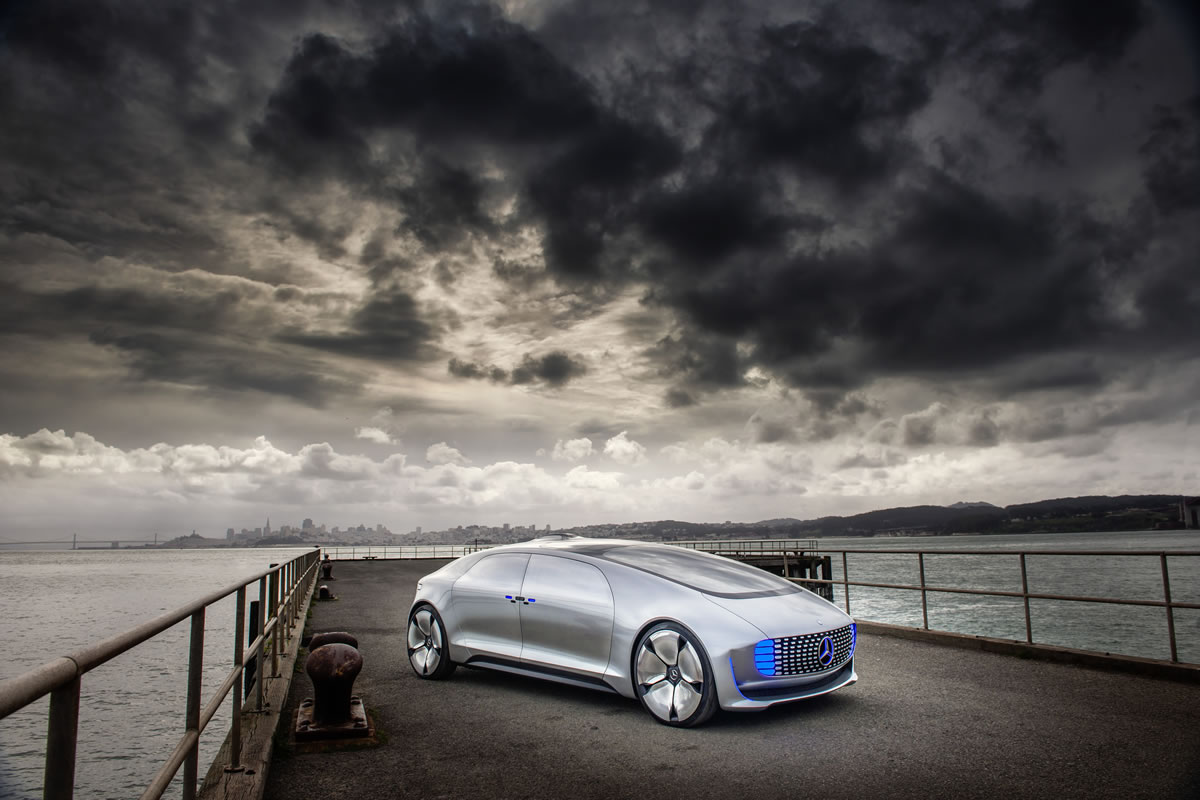
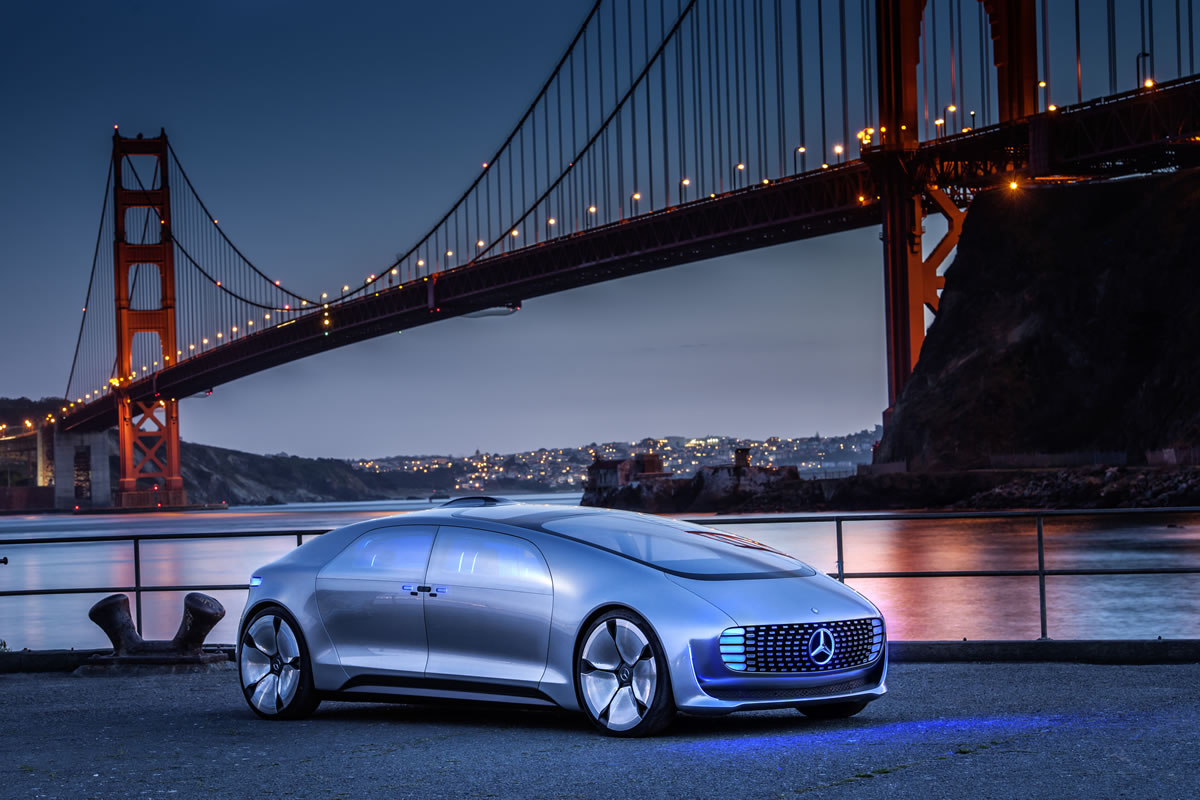
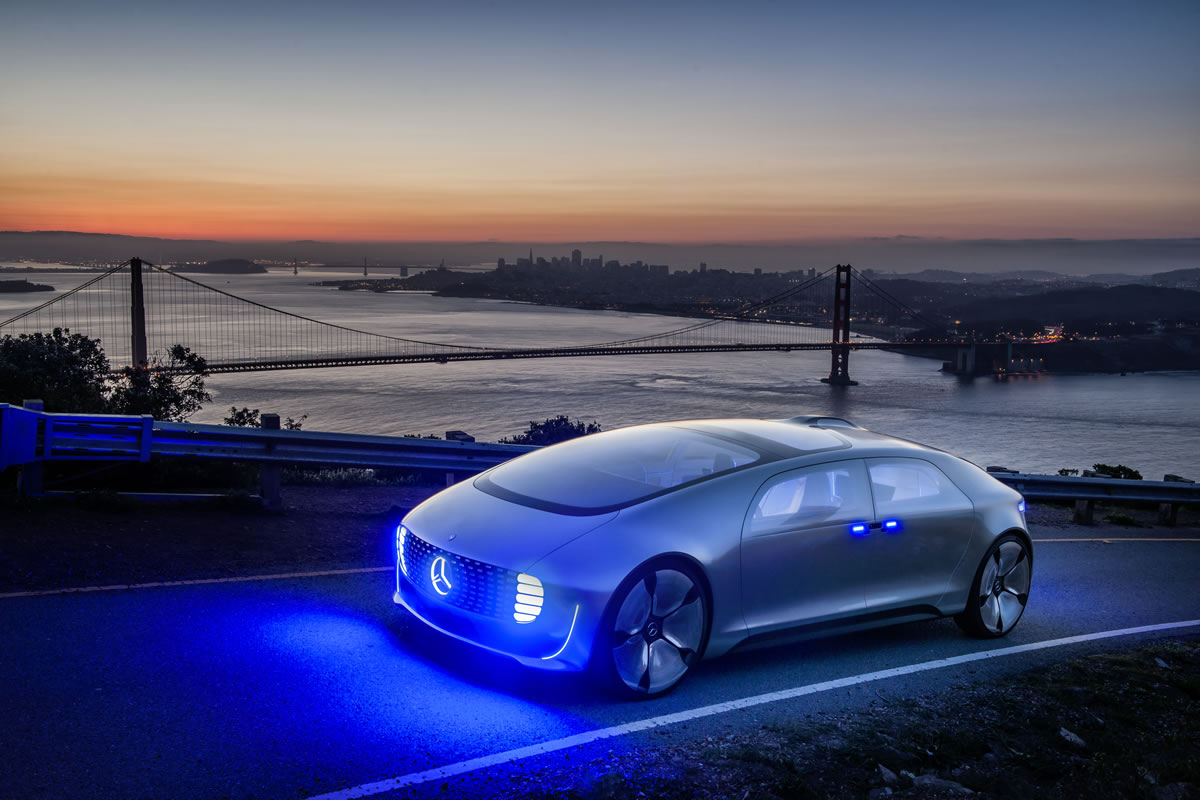
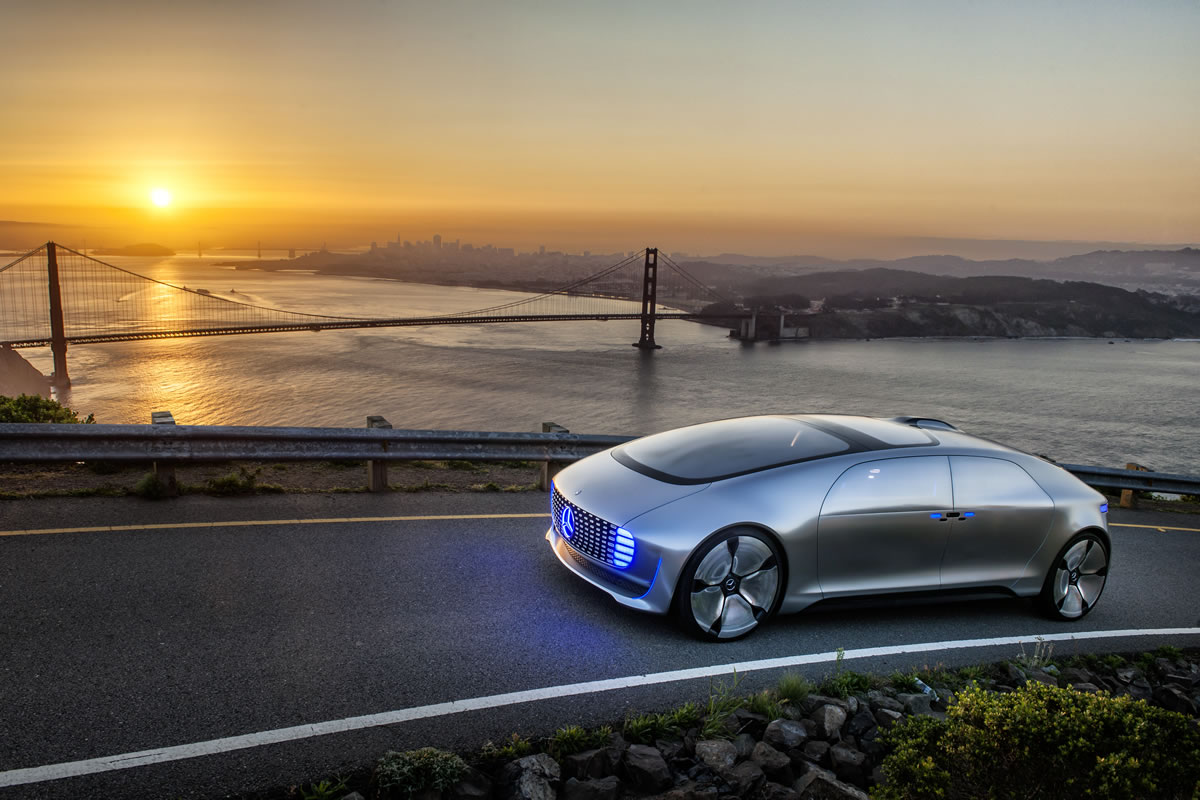
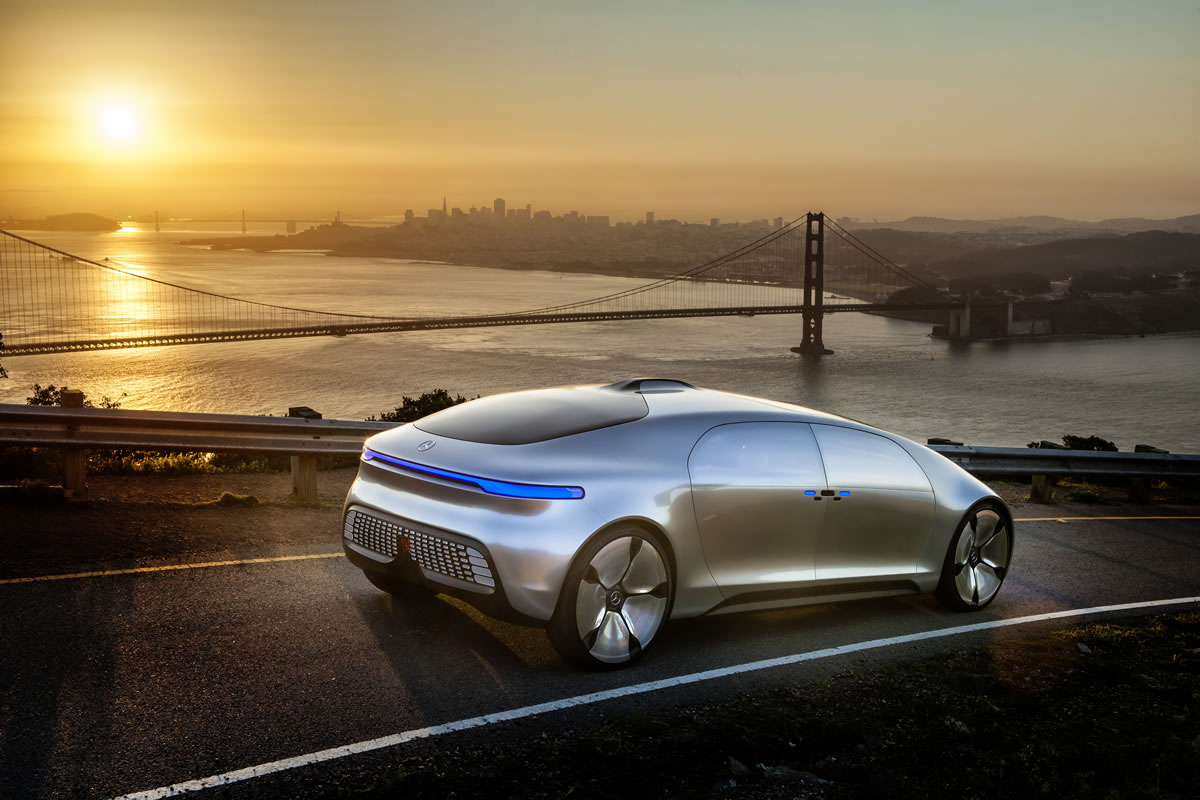
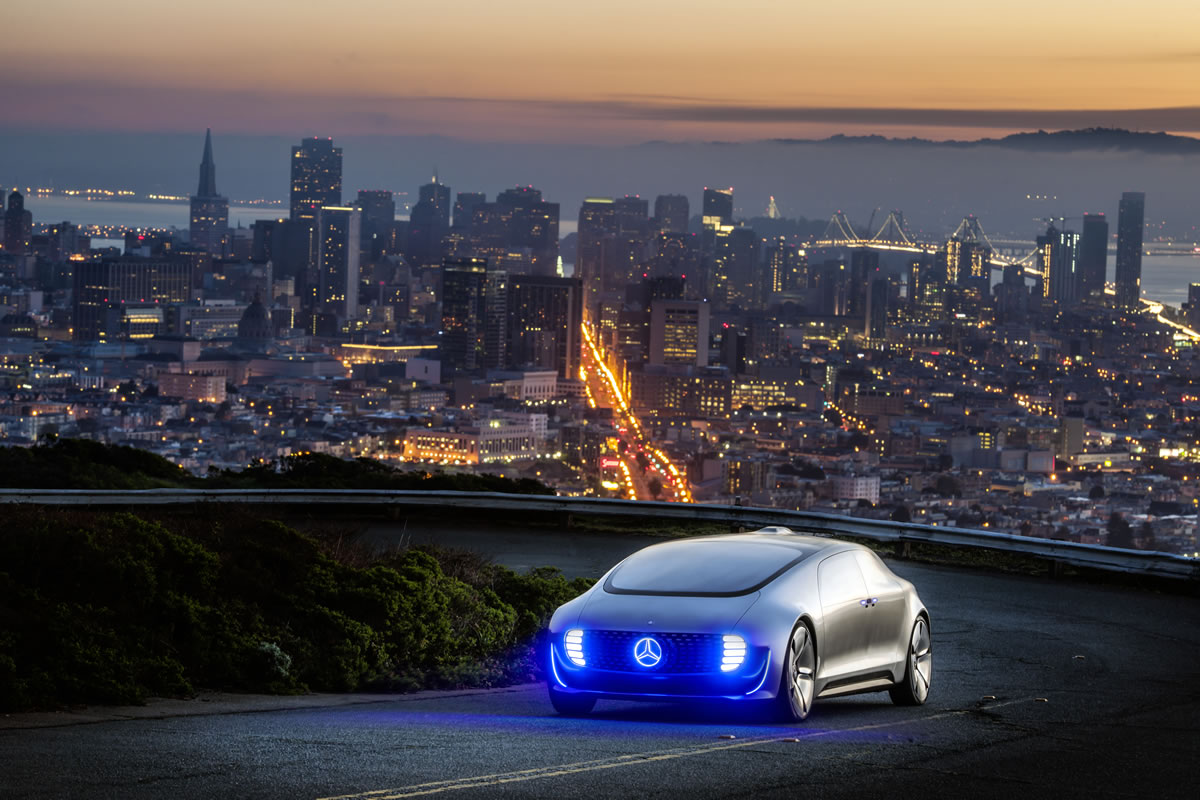
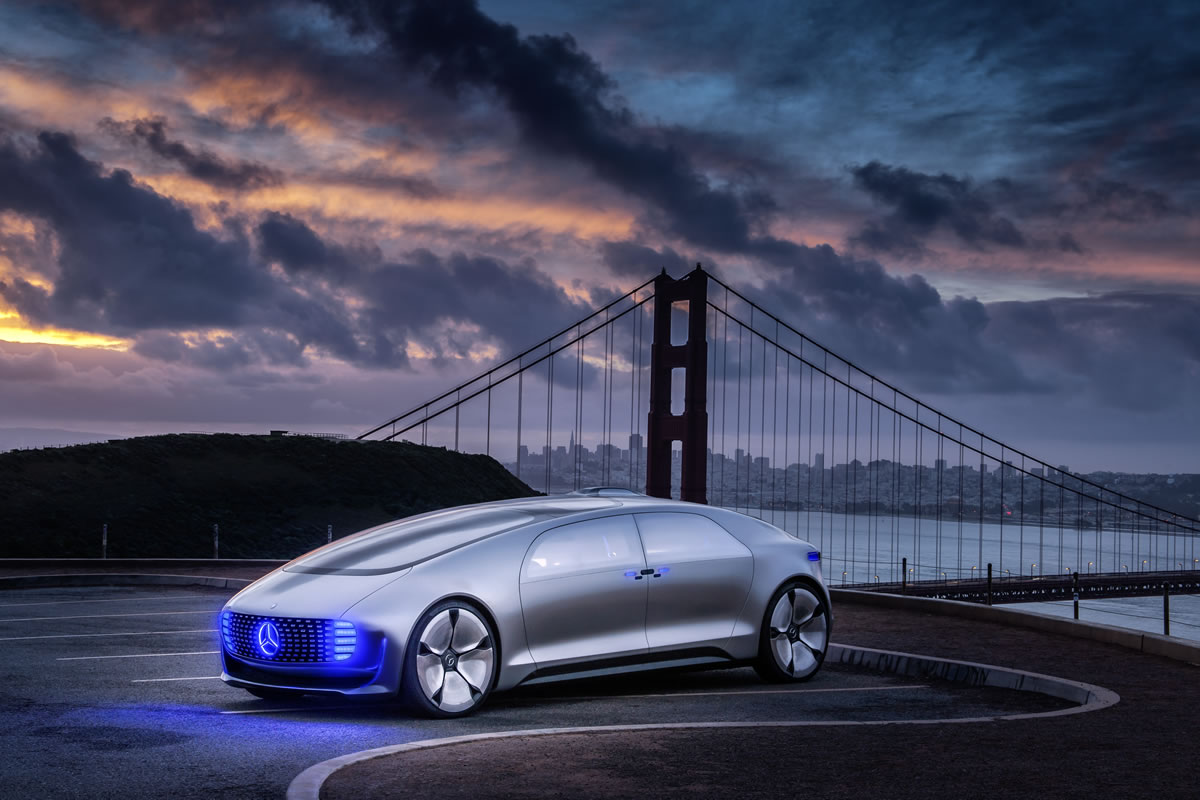
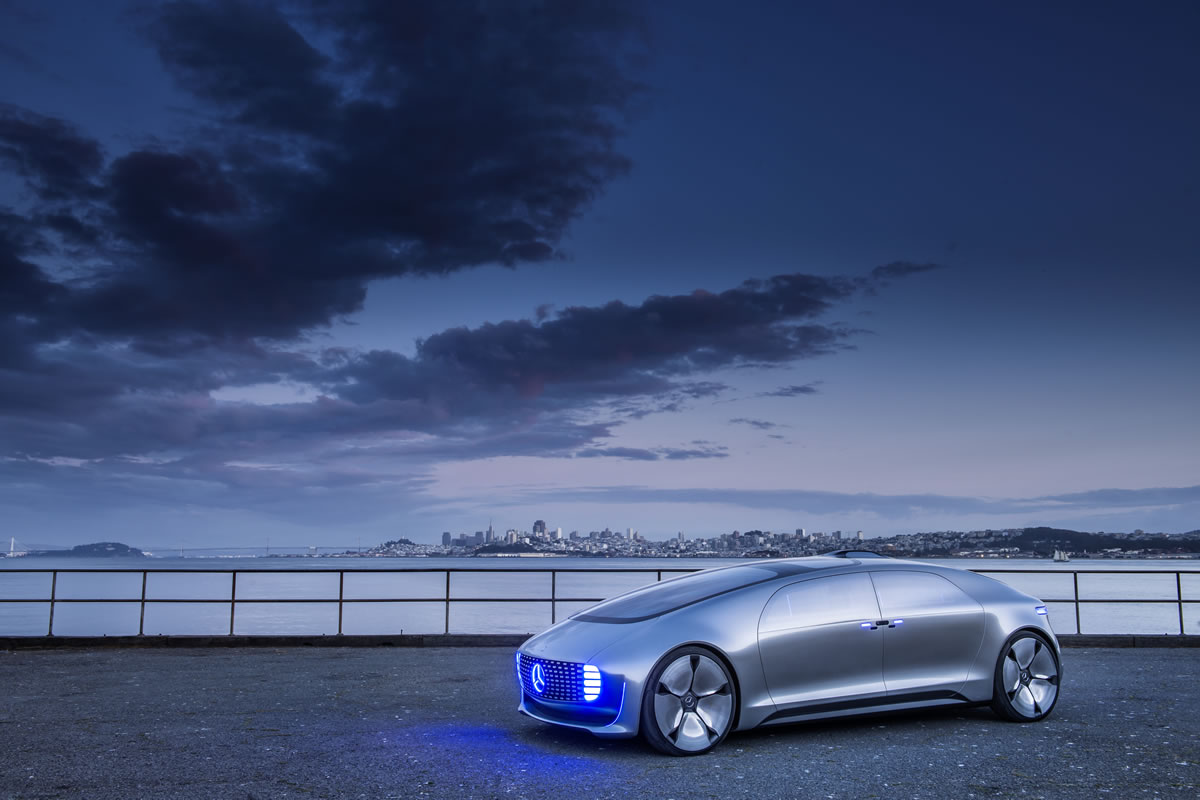
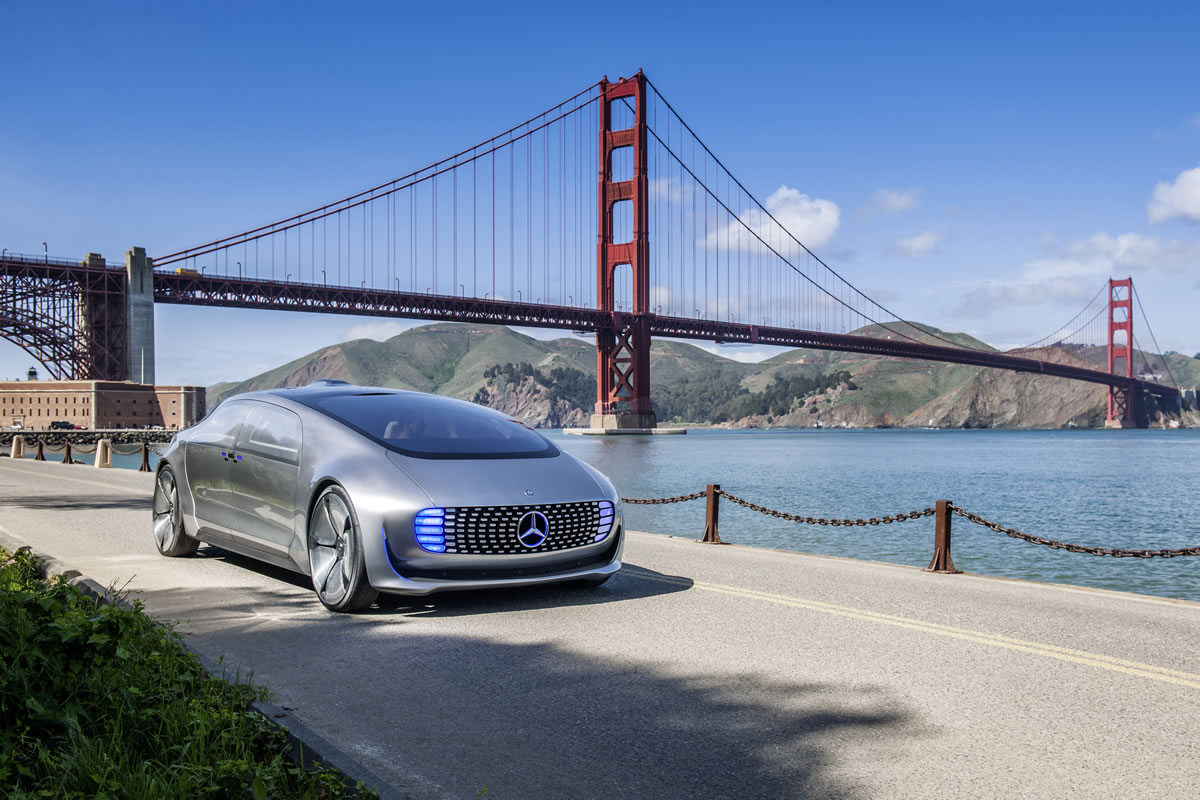
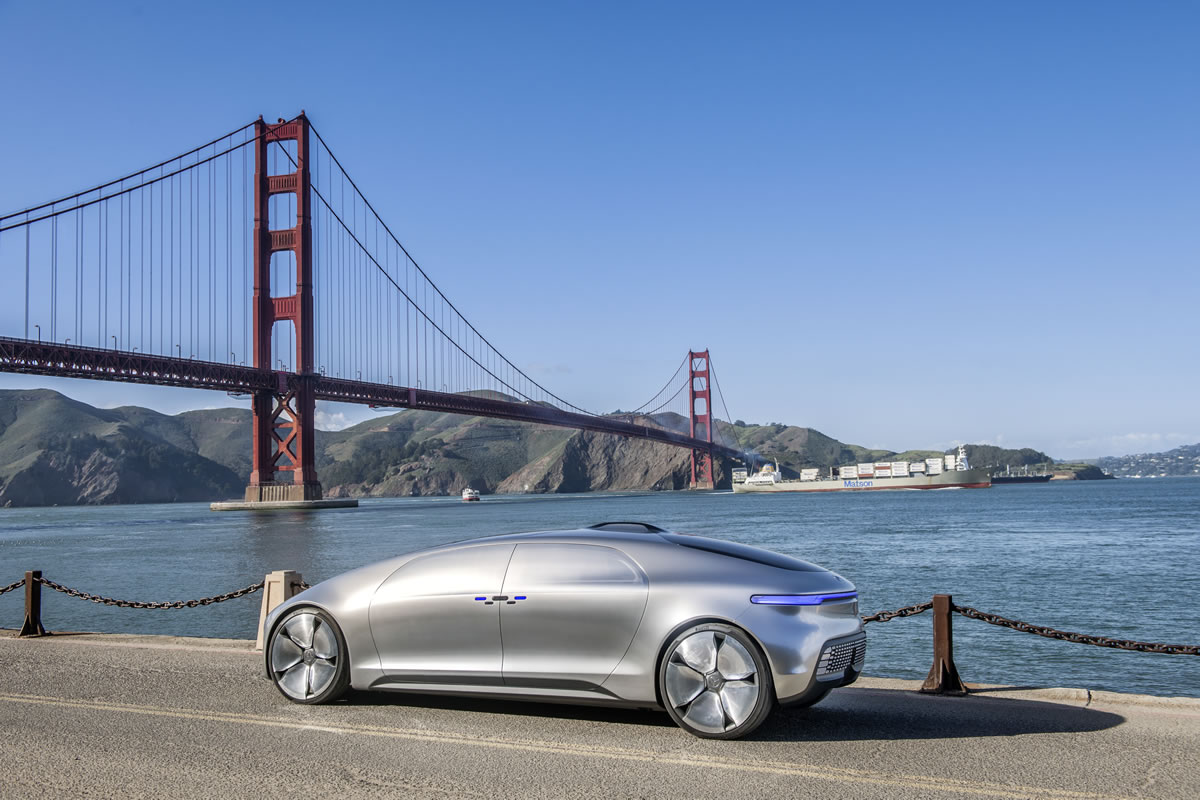
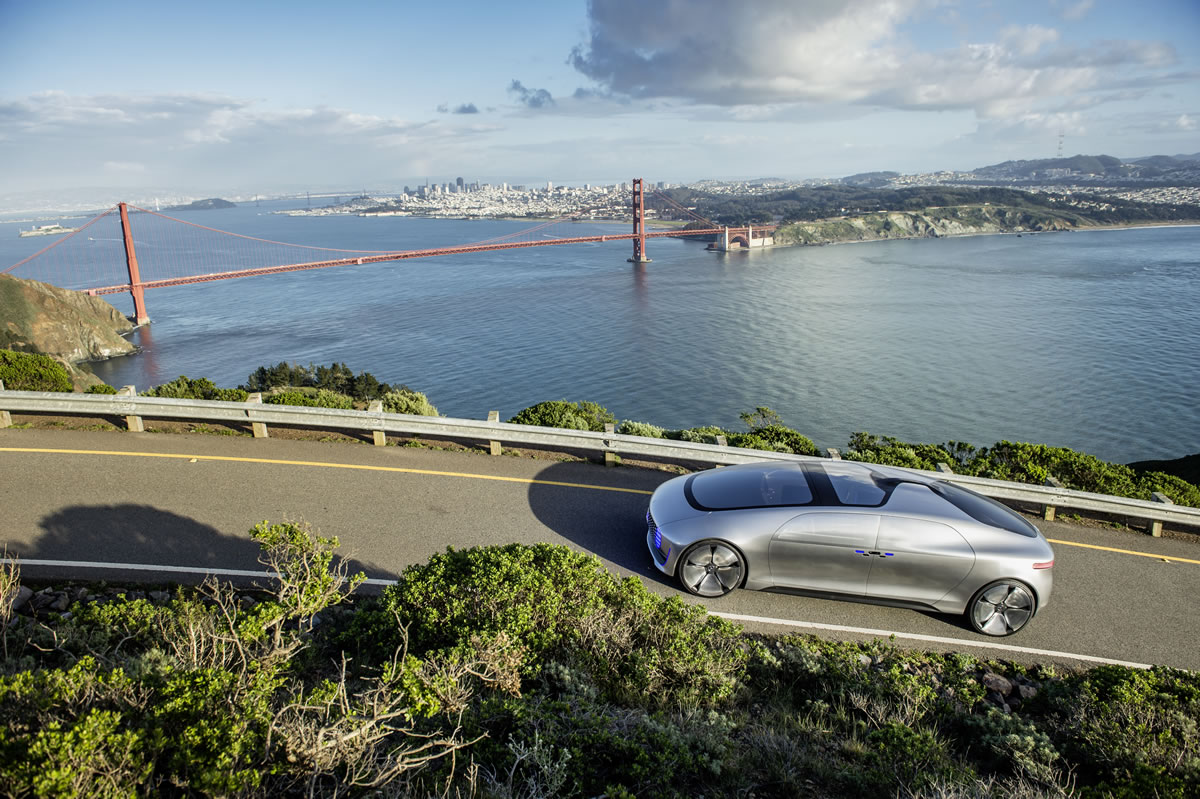
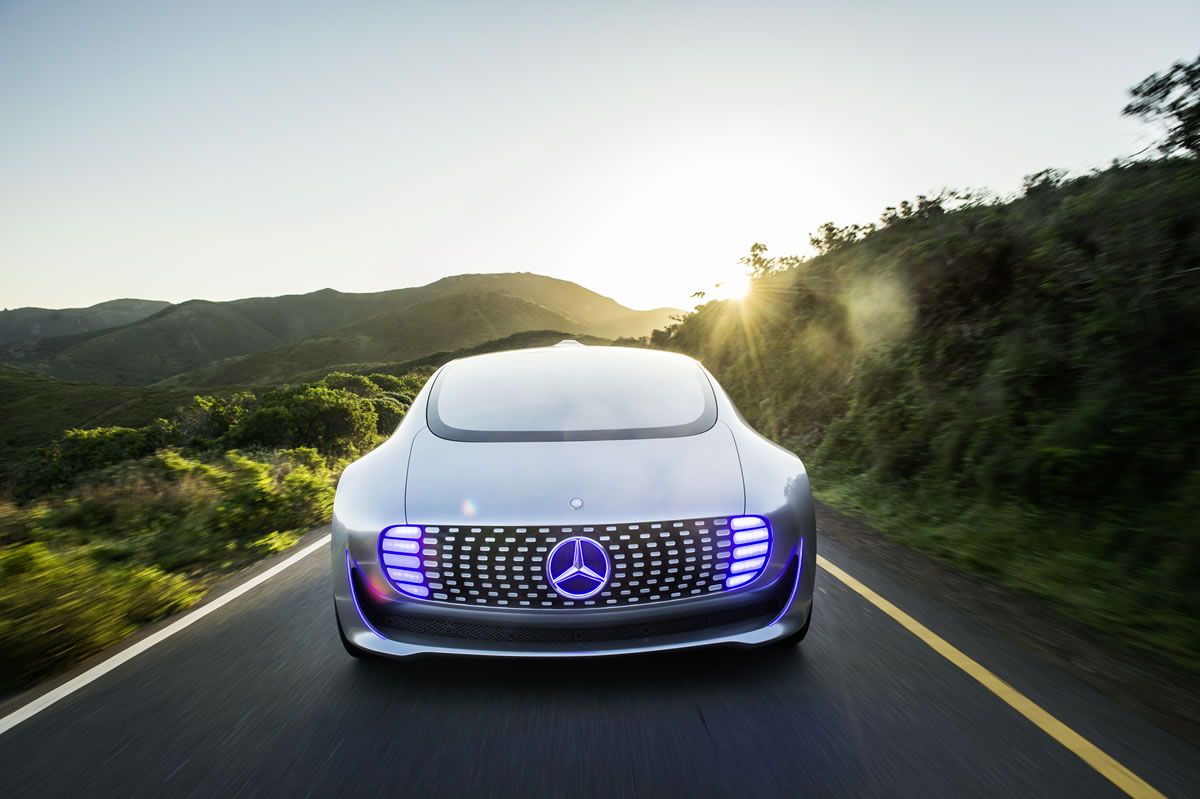
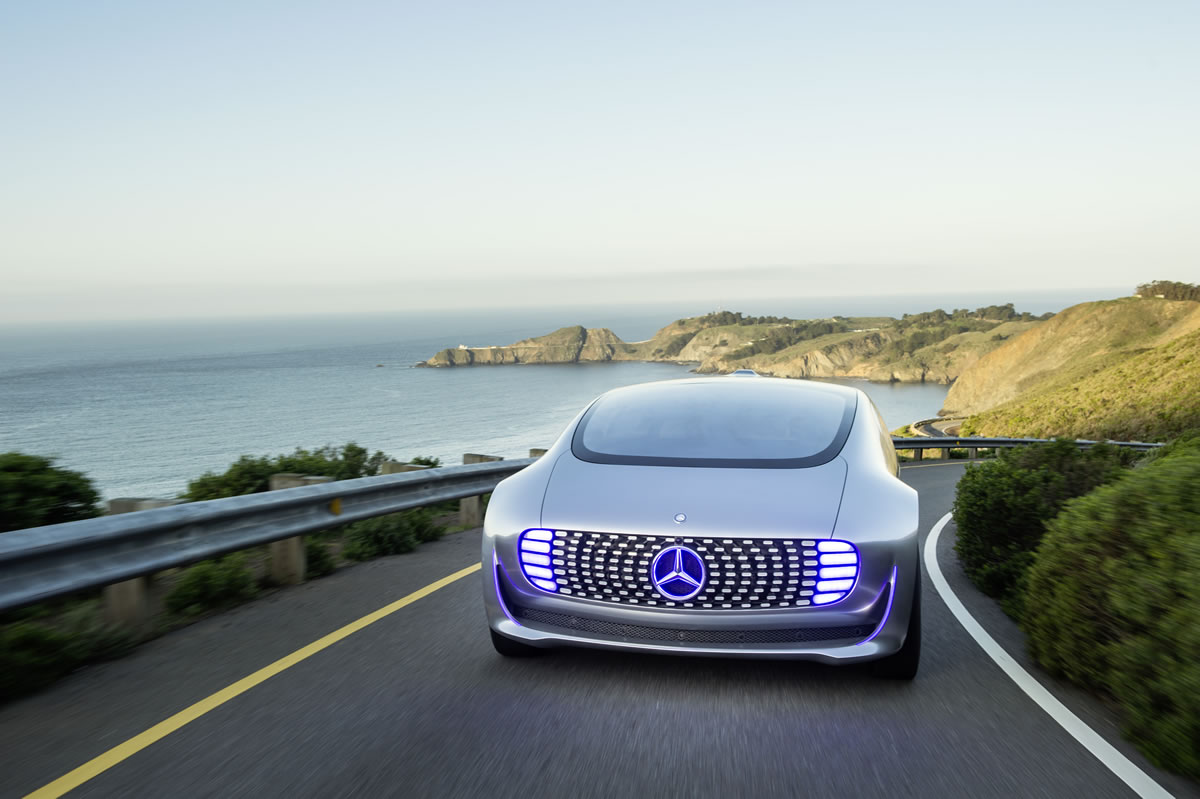
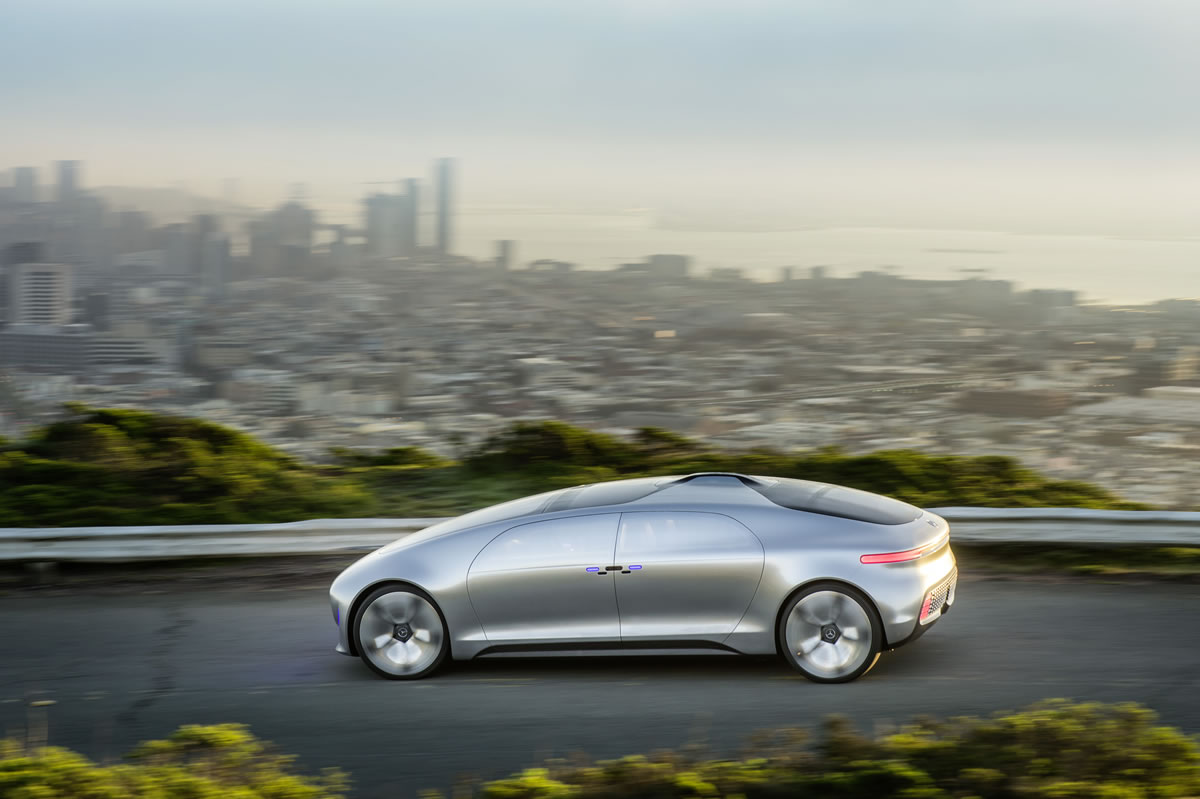
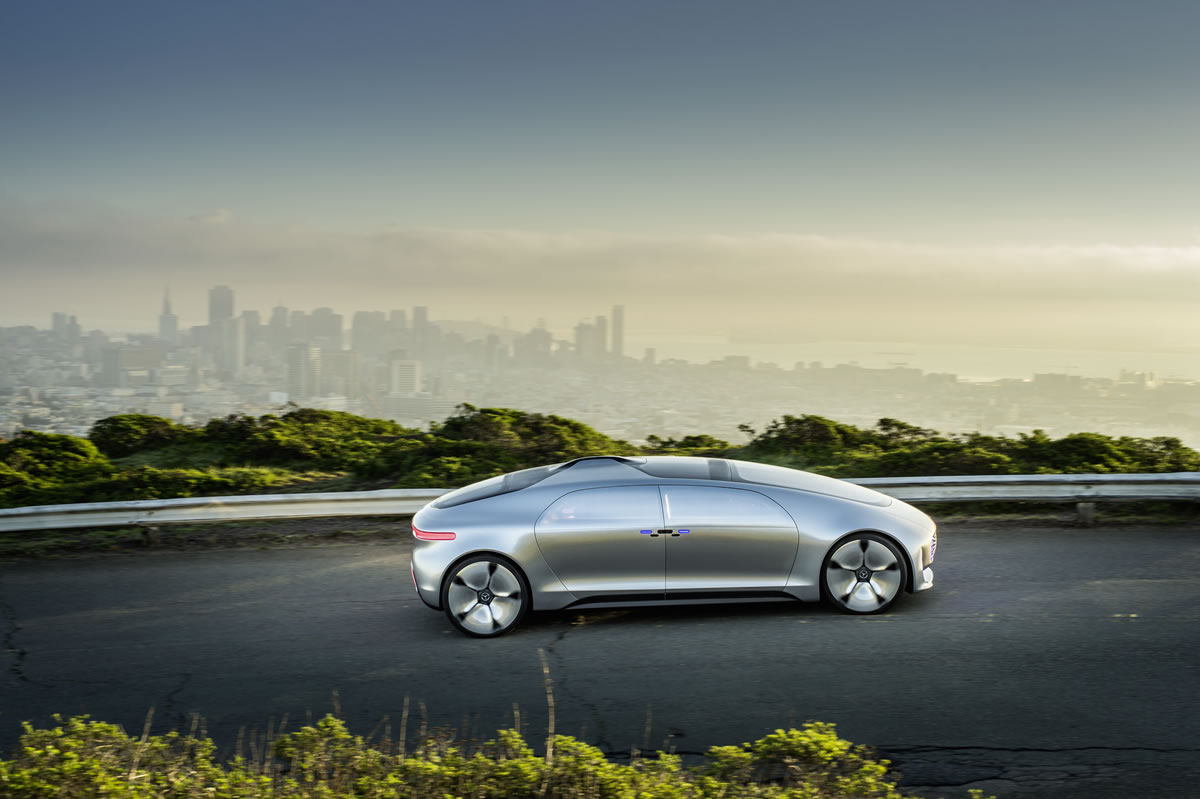
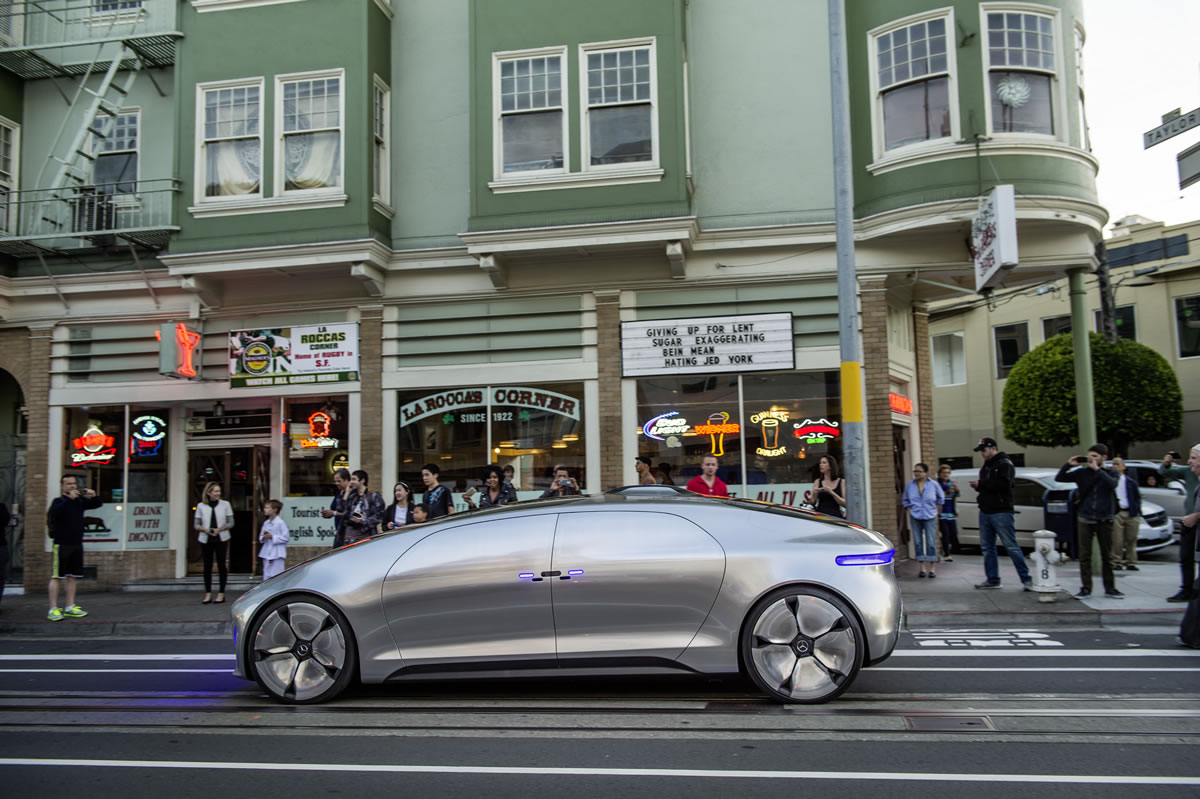
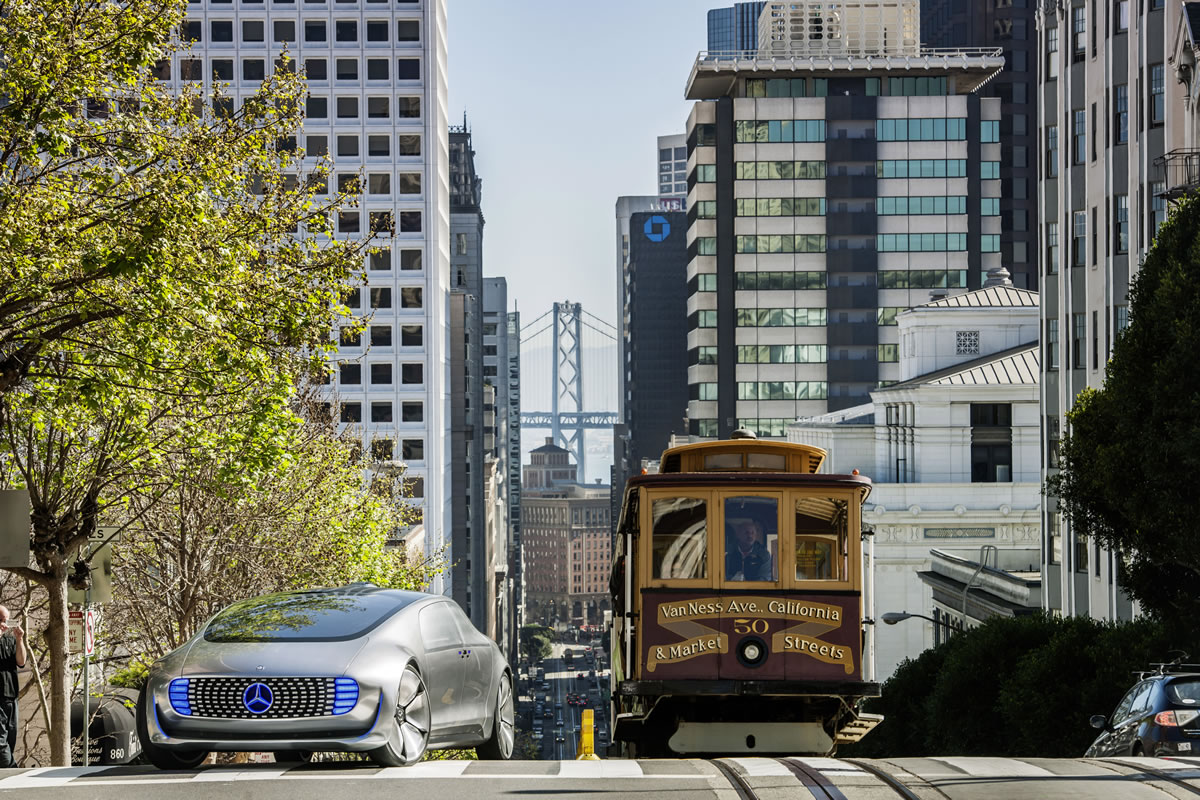
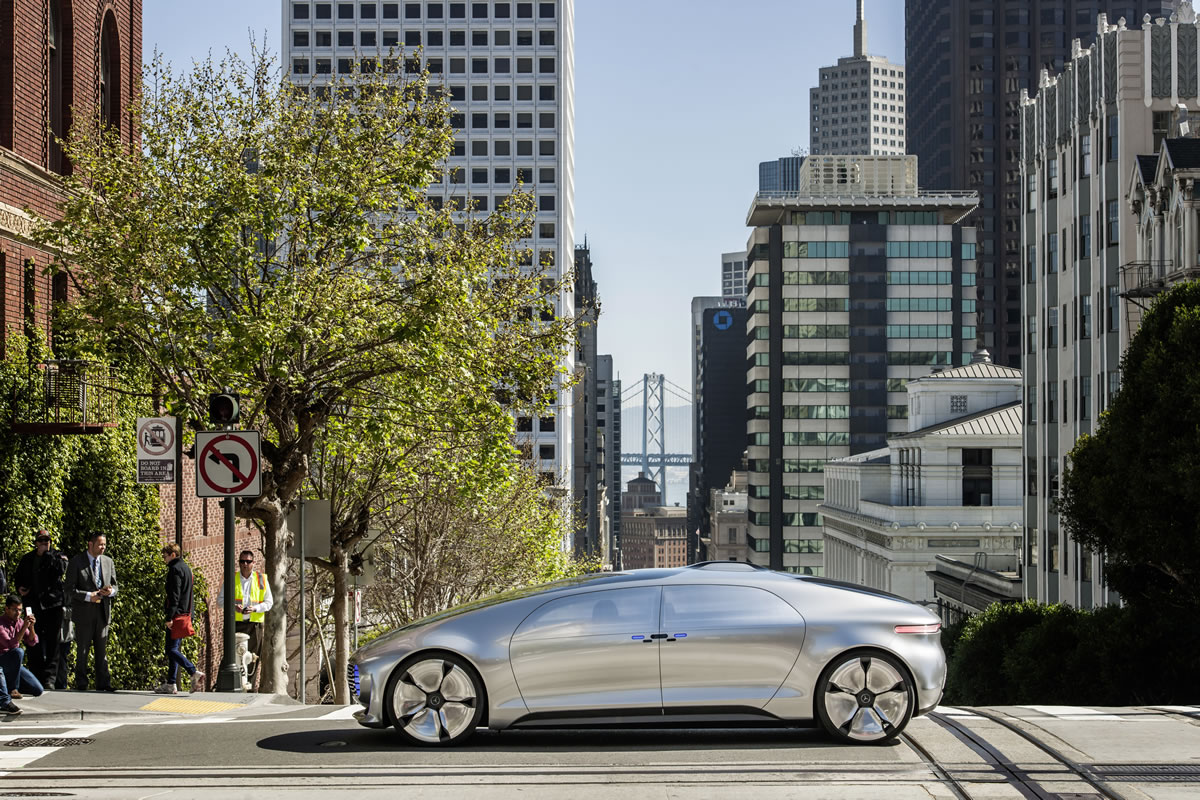
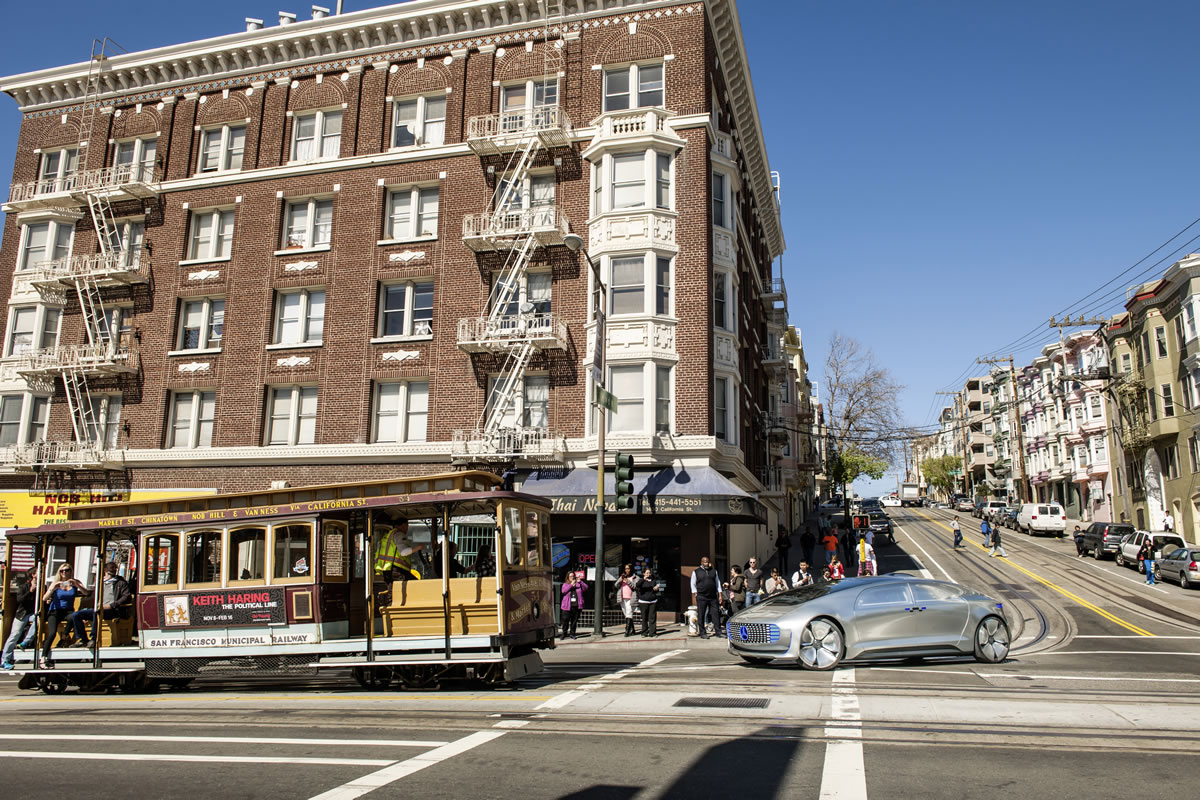
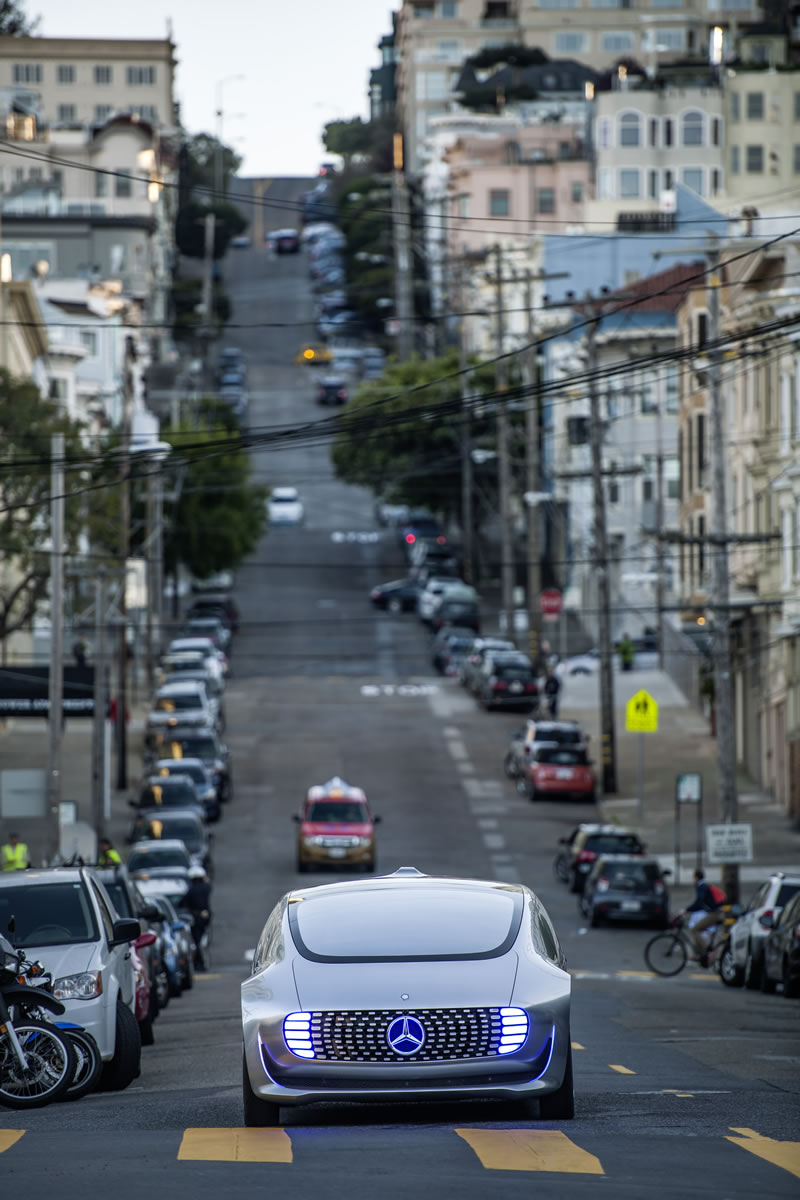
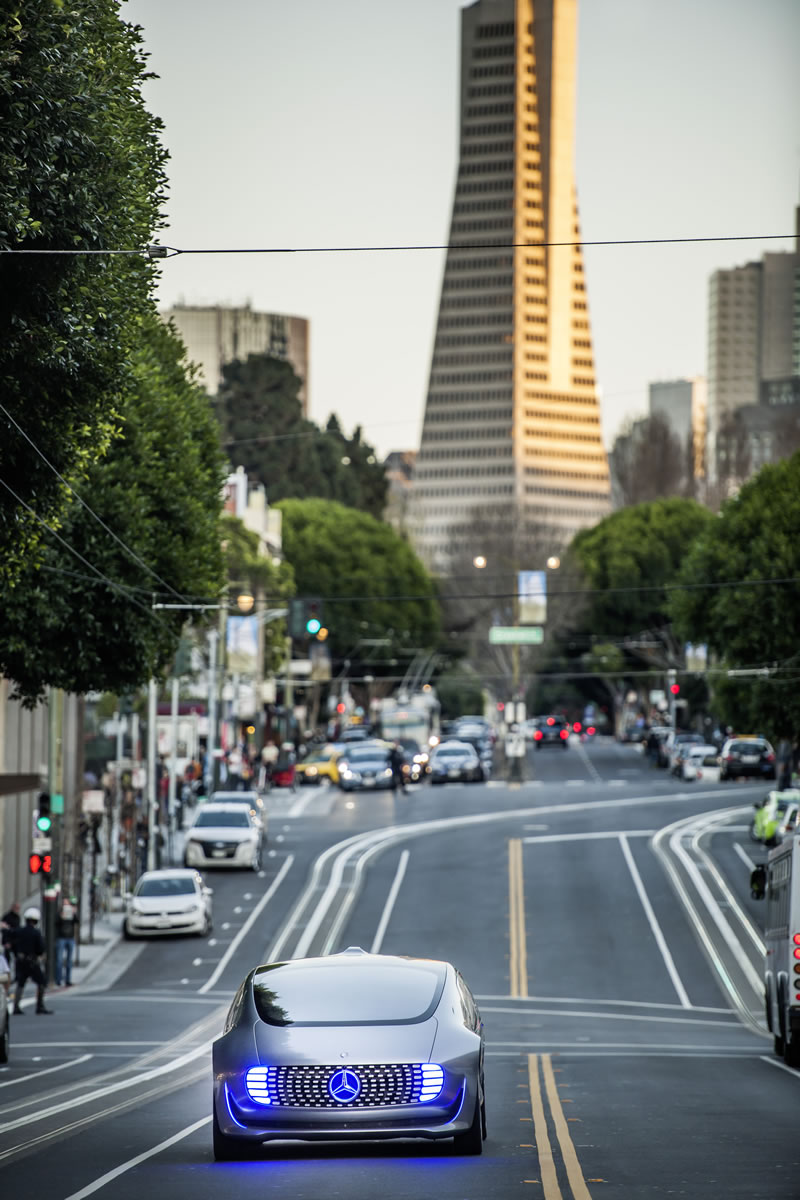
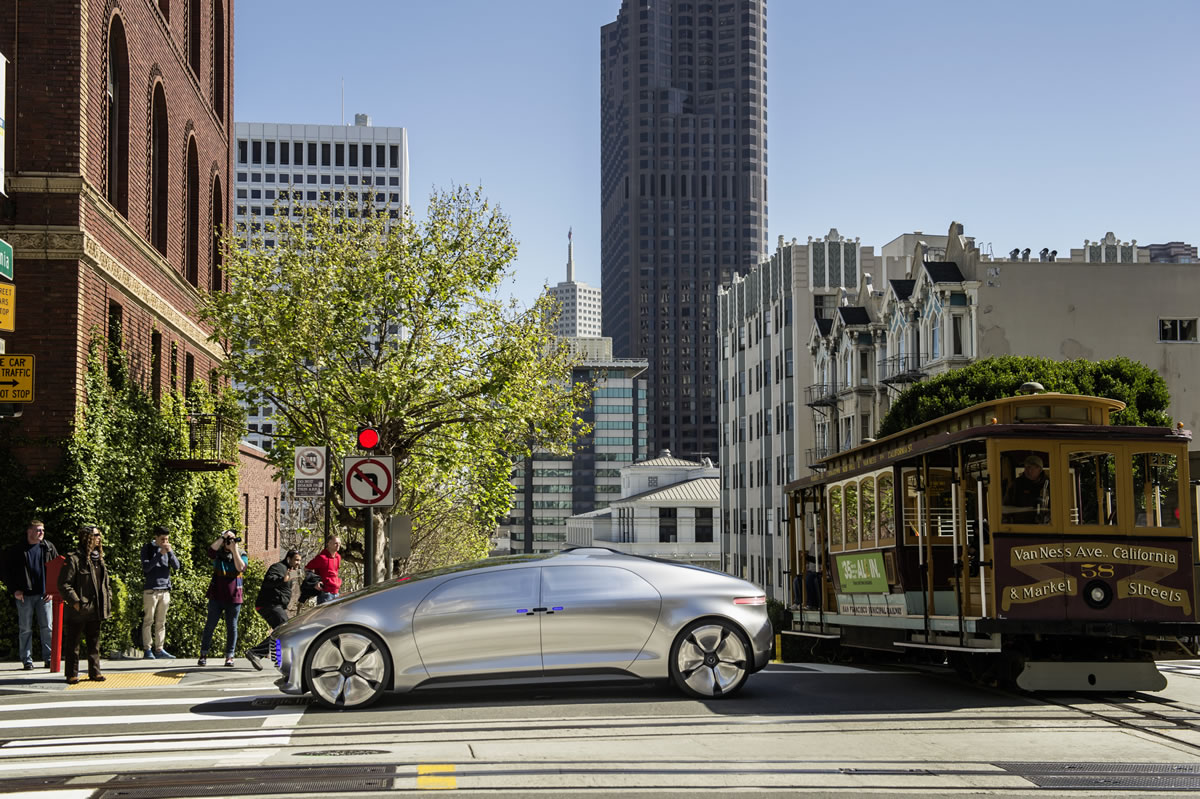
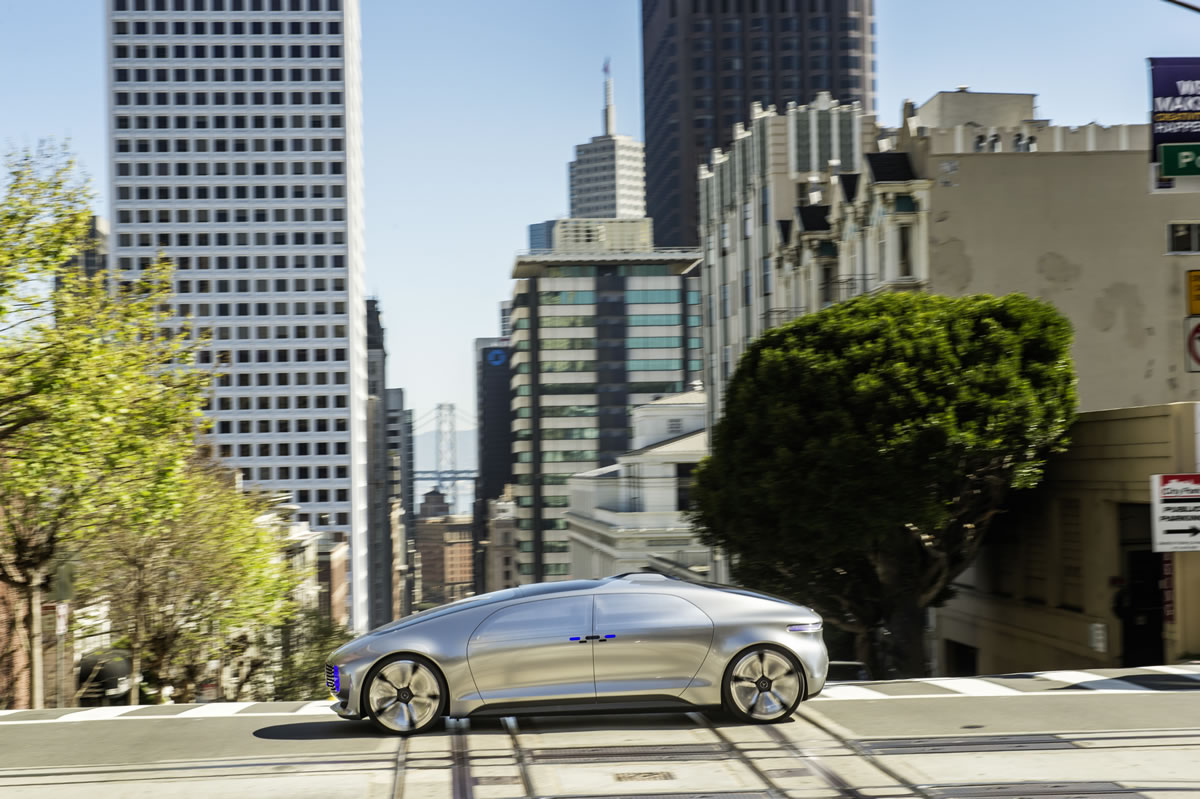



![On its third long-distance road trip over 1,000+ kilometres, the VISION EQXX technology programme demonstrated that even the Arabian Desert is no obstacle to energy efficiency. On a challenging route profile encompassing busy city streets and open desert, the pioneering test vehicle delivered electric power consumption of 7.4 kWh/100km (On-Board consumption without charging losses).;[1] On-board consumption without charging losses](https://s3.amazonaws.com/media.emercedesbenz.com/magazine/wp-content/uploads/2024/03/18092214/24c0100_009-1000x570.jpg)